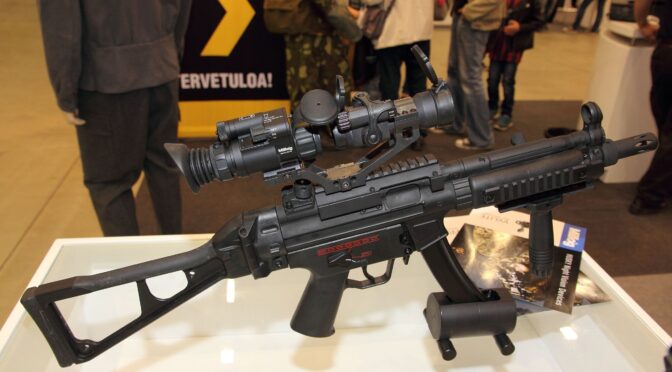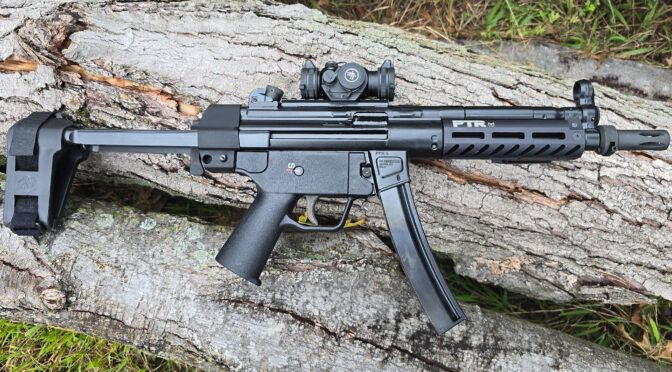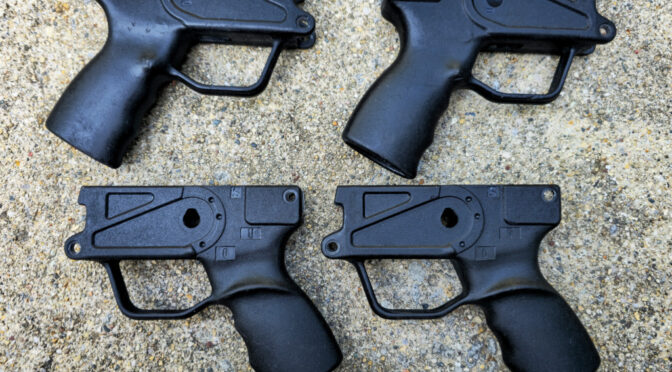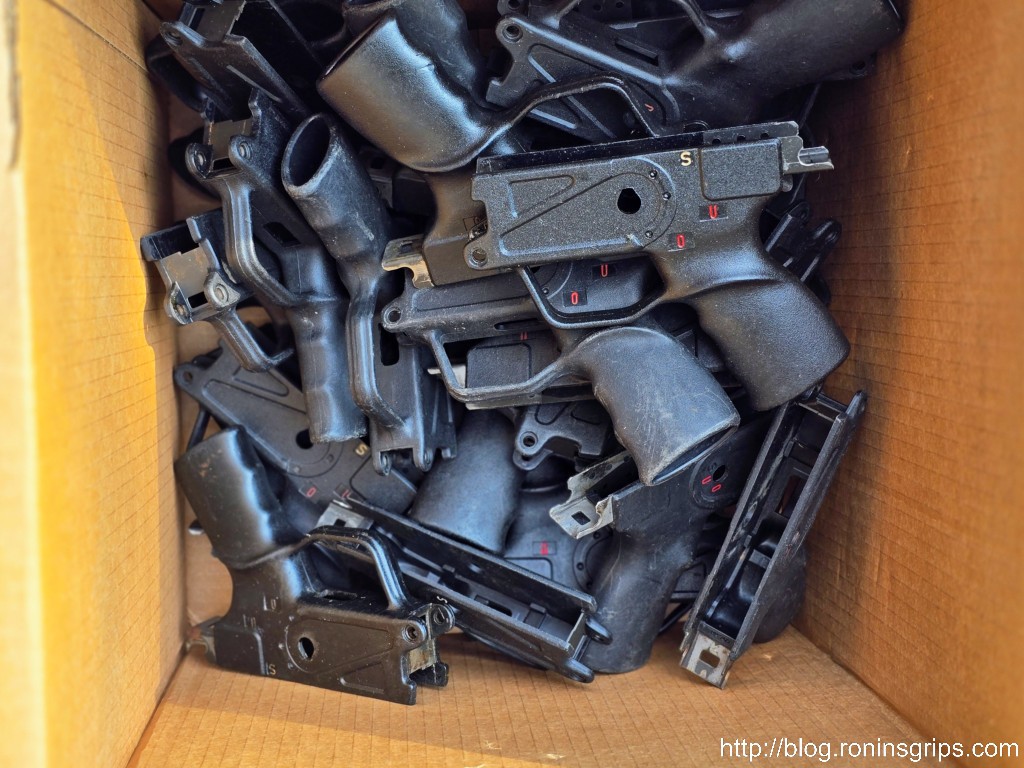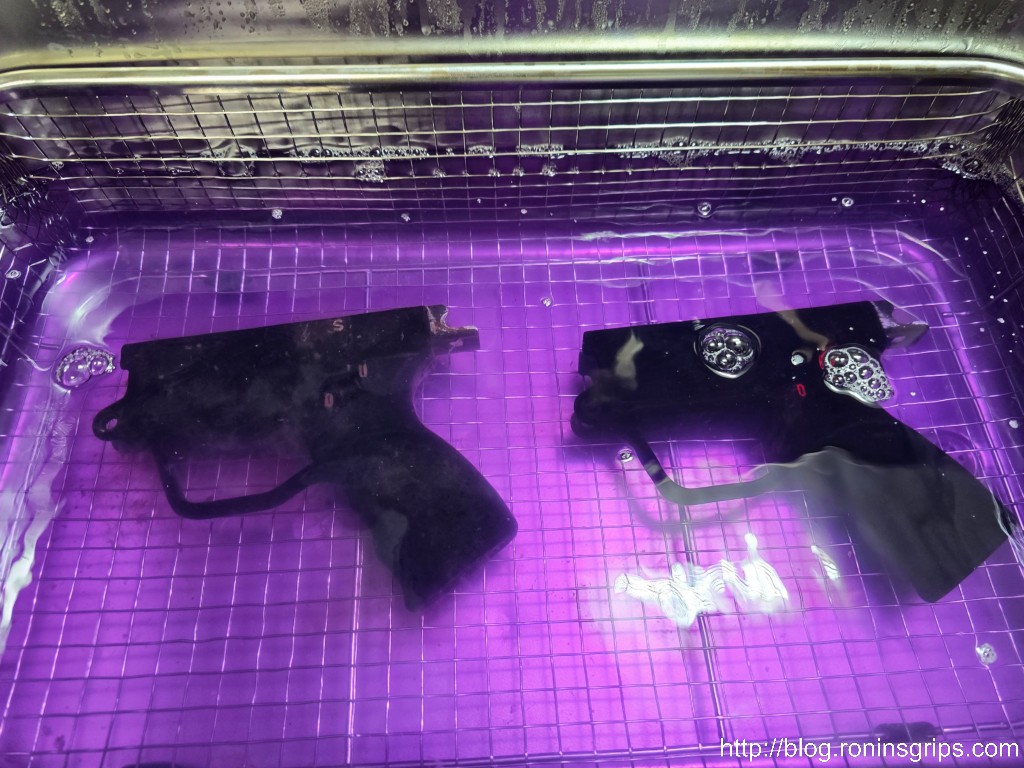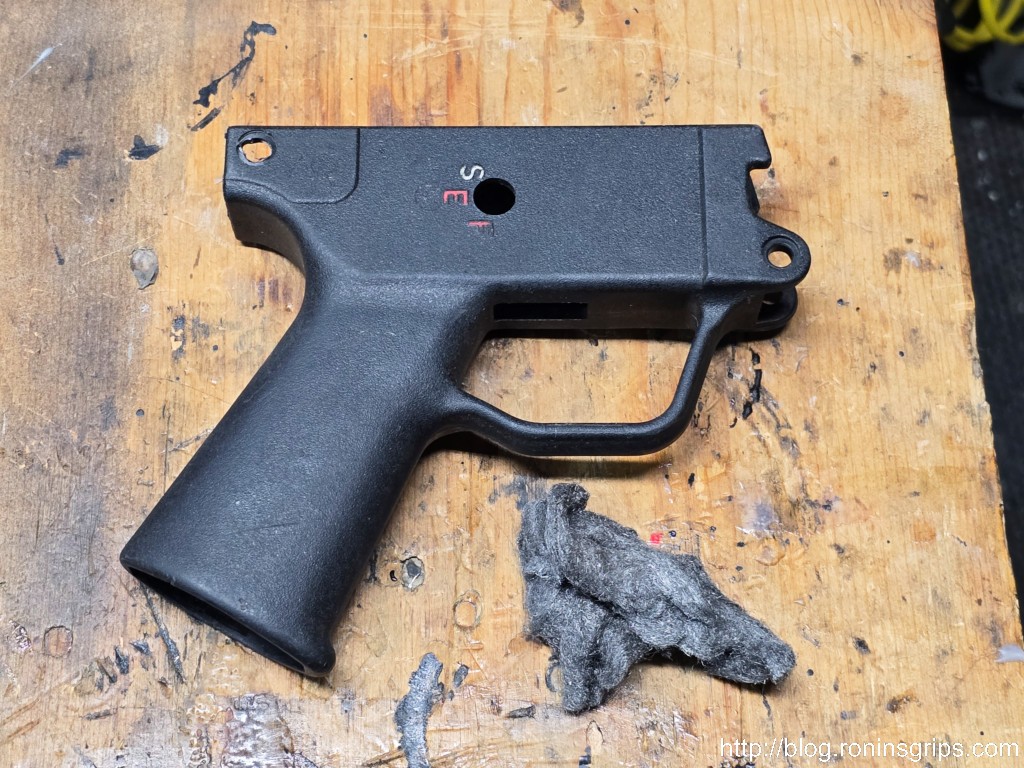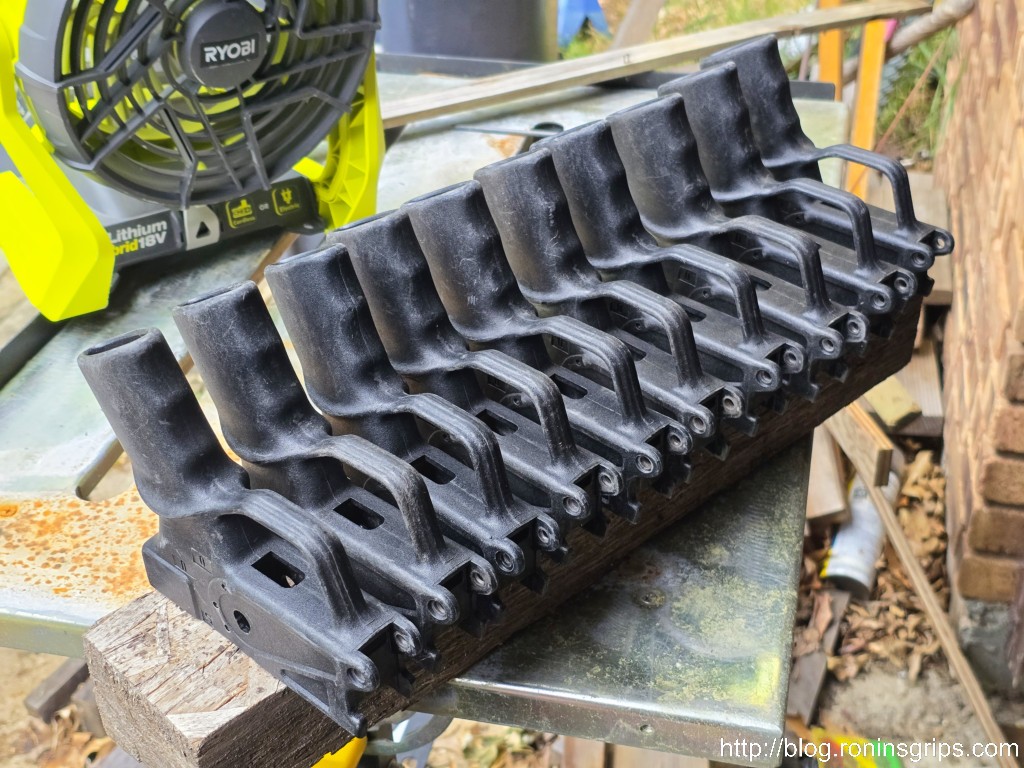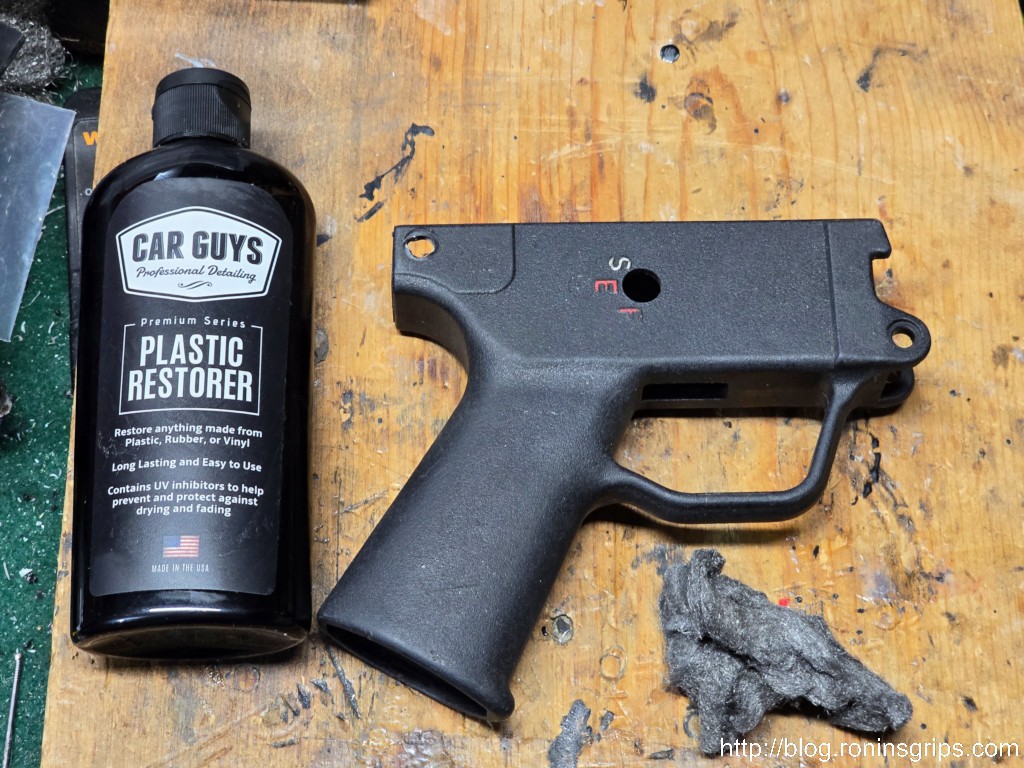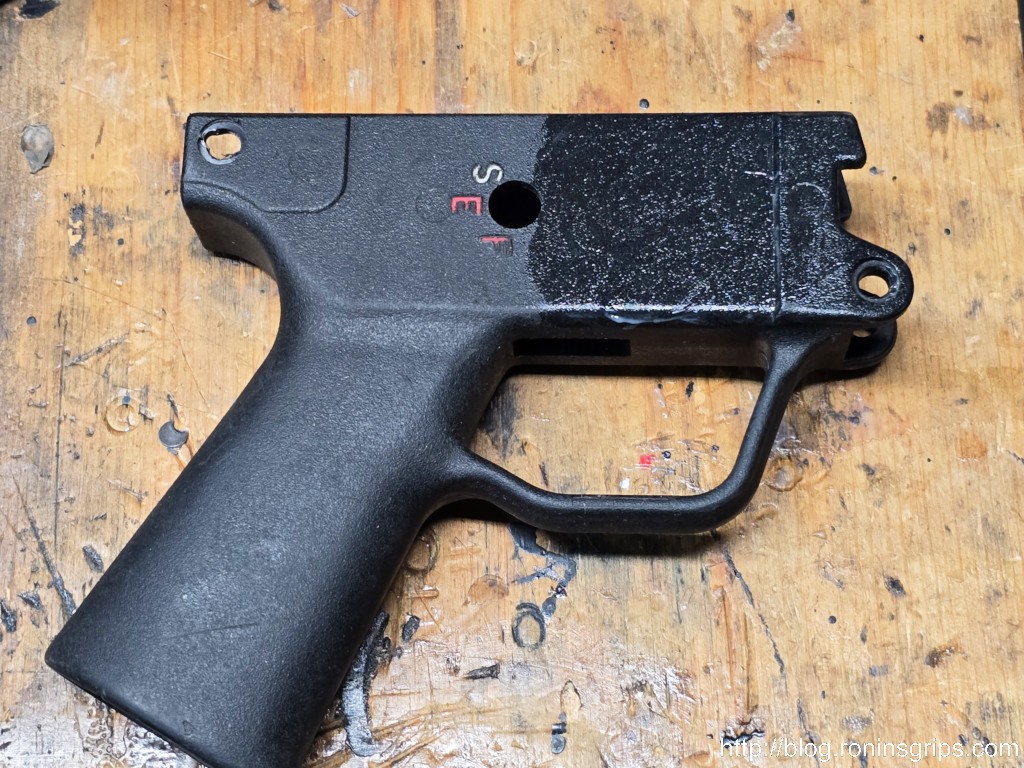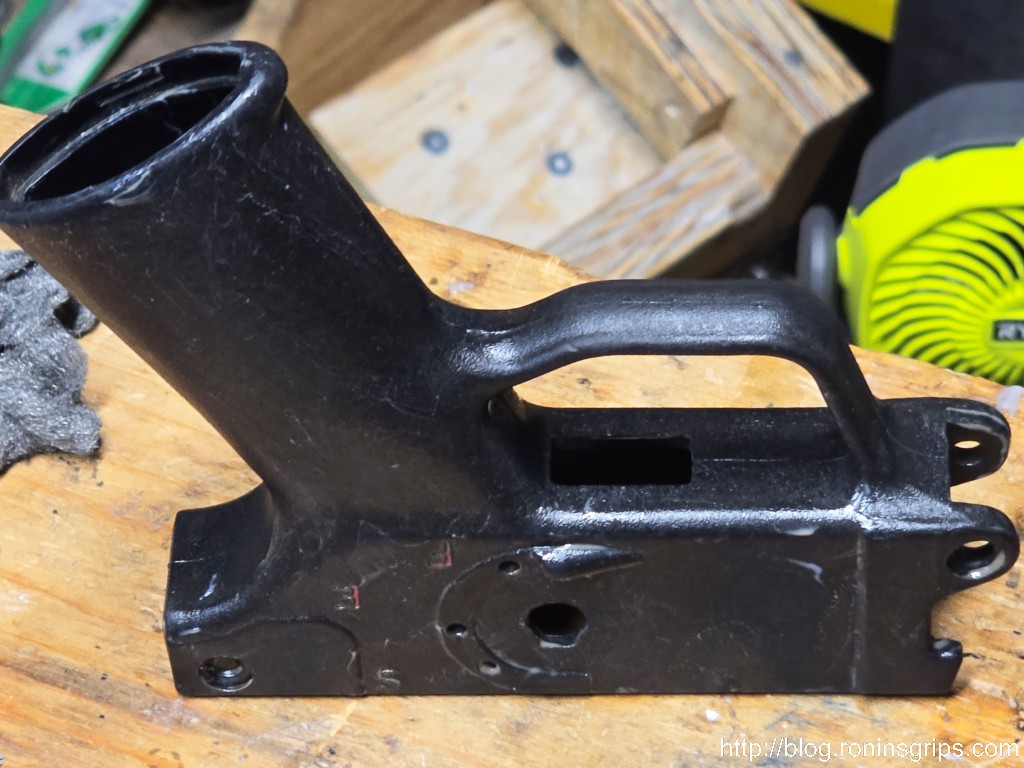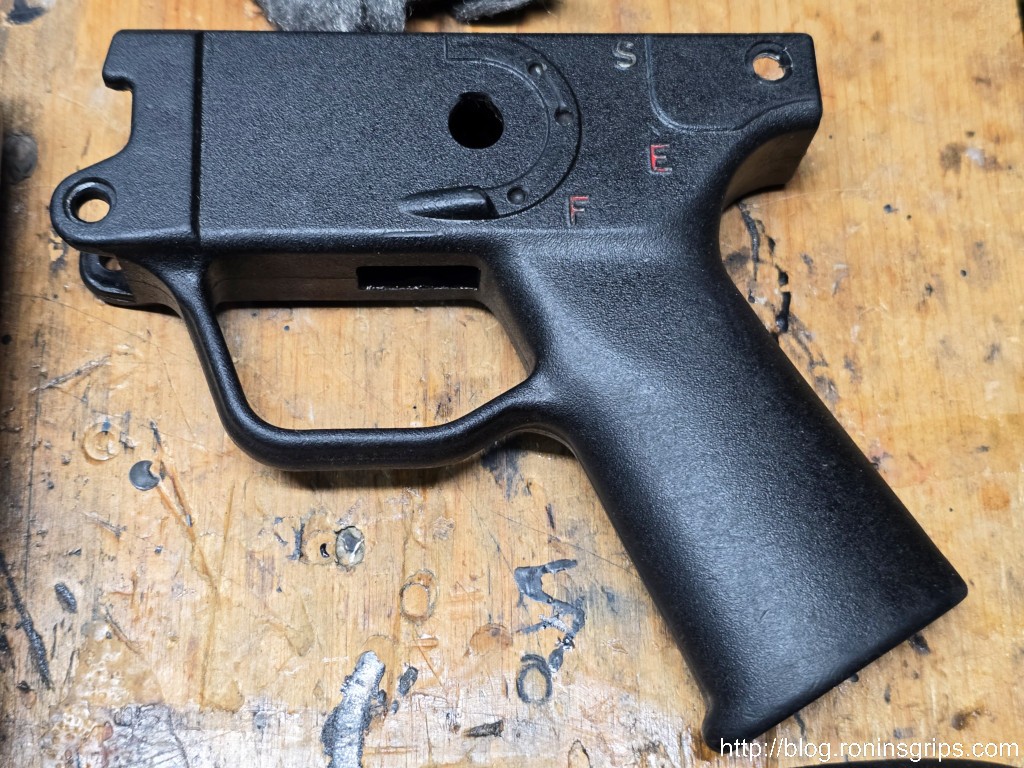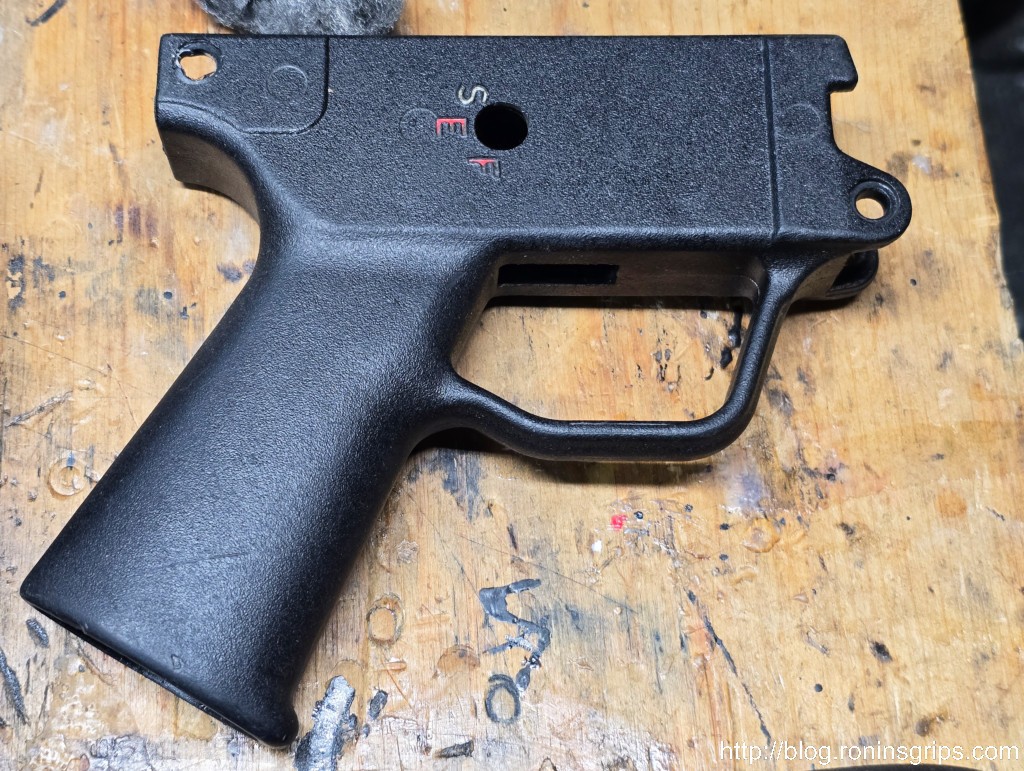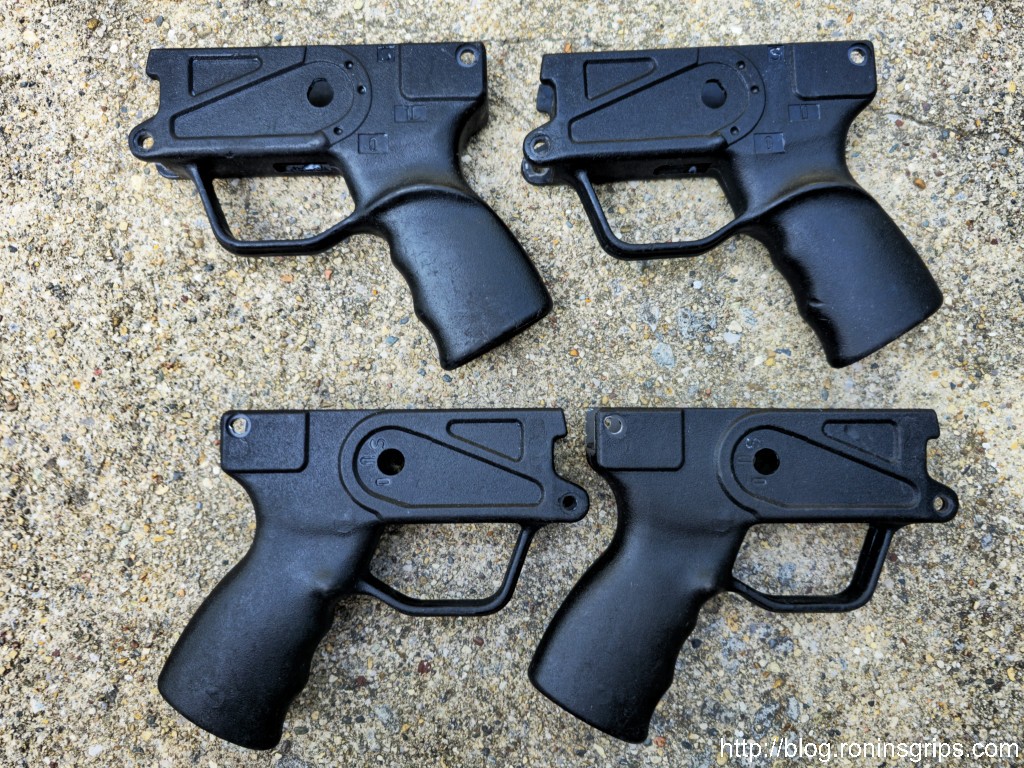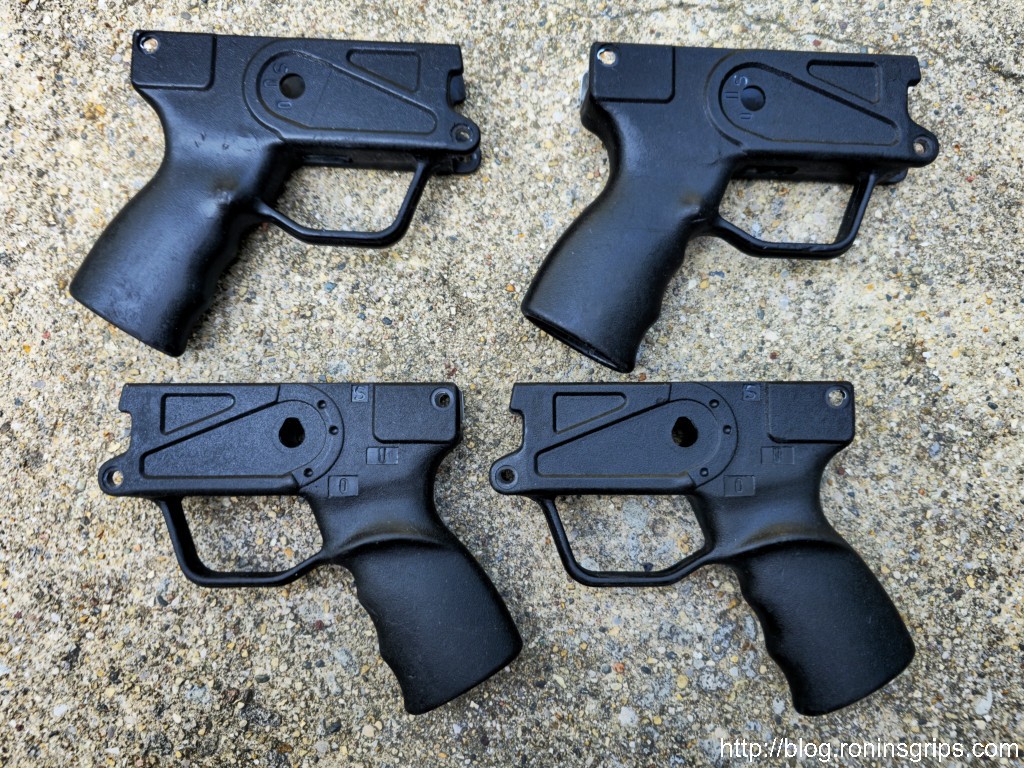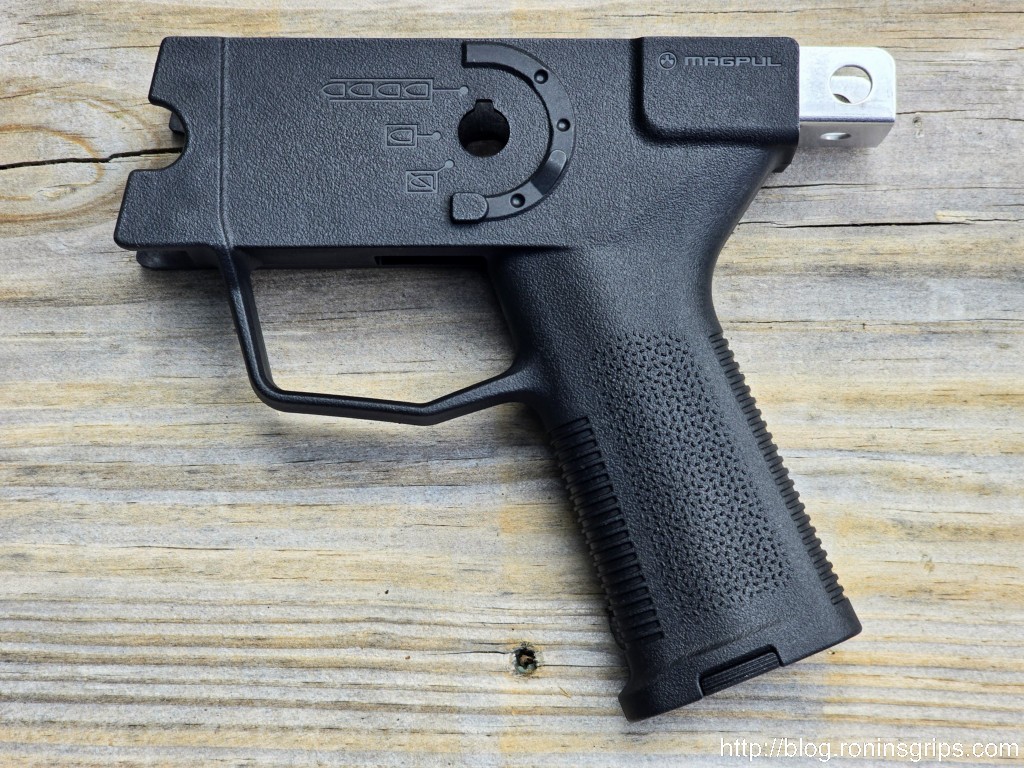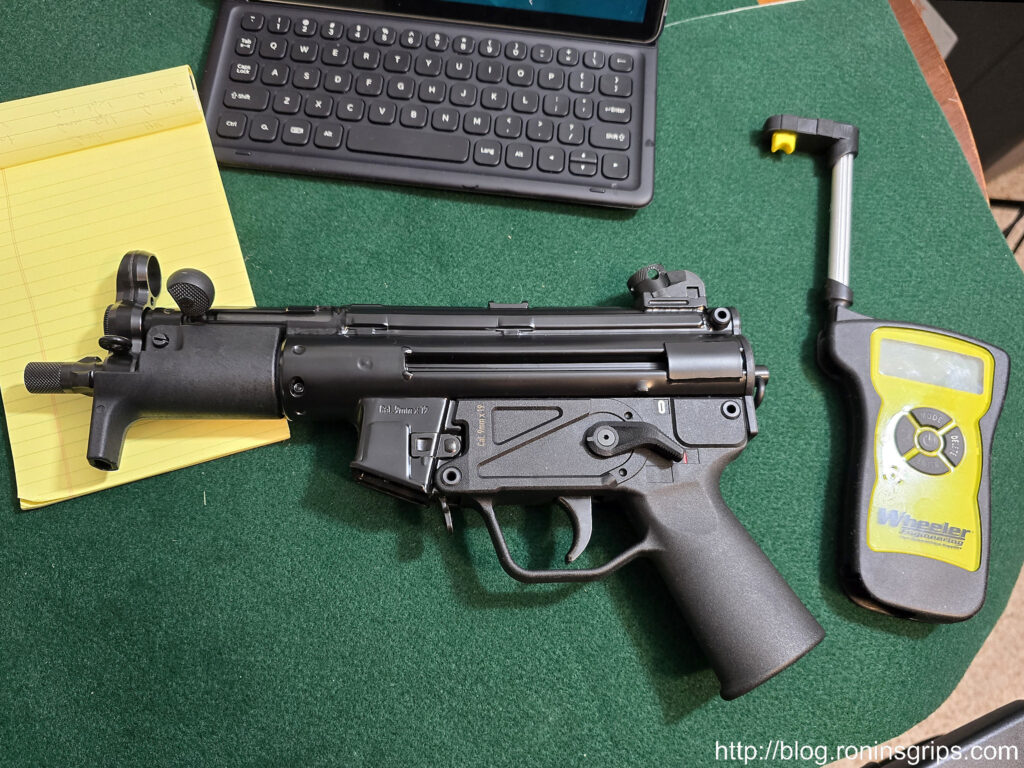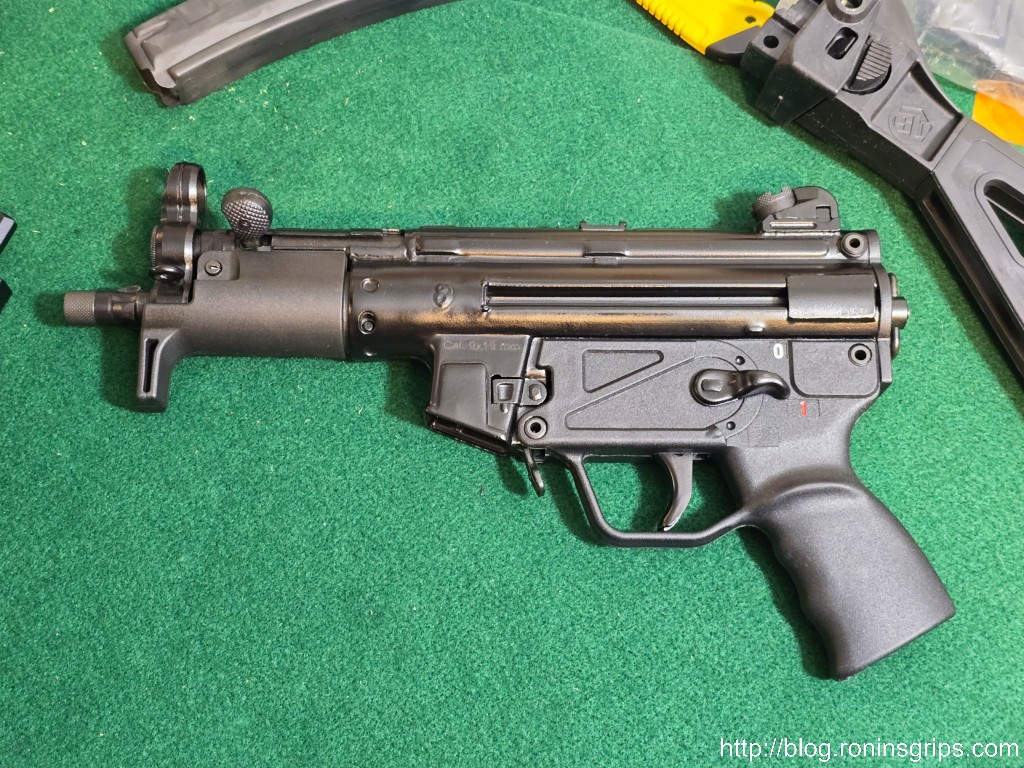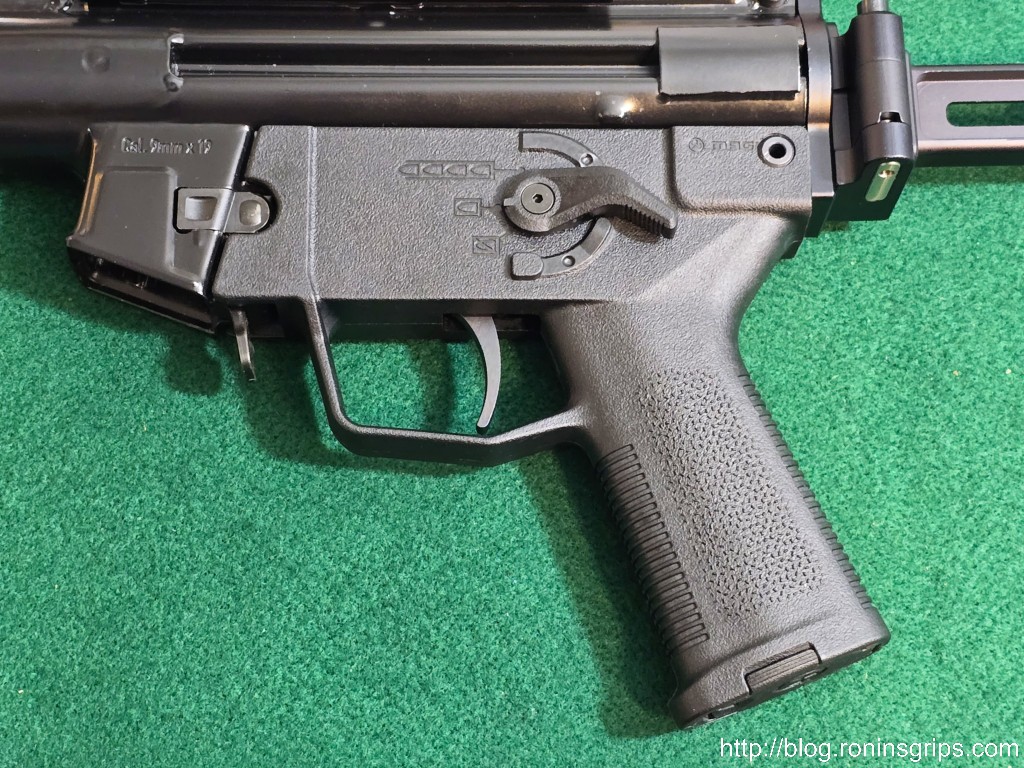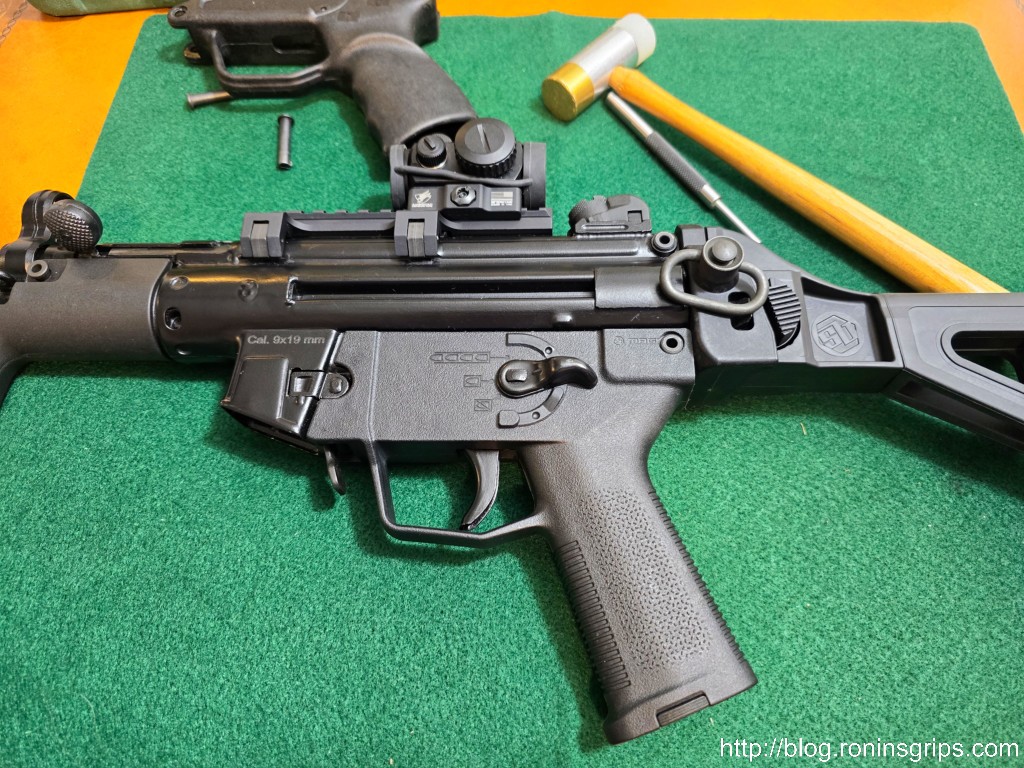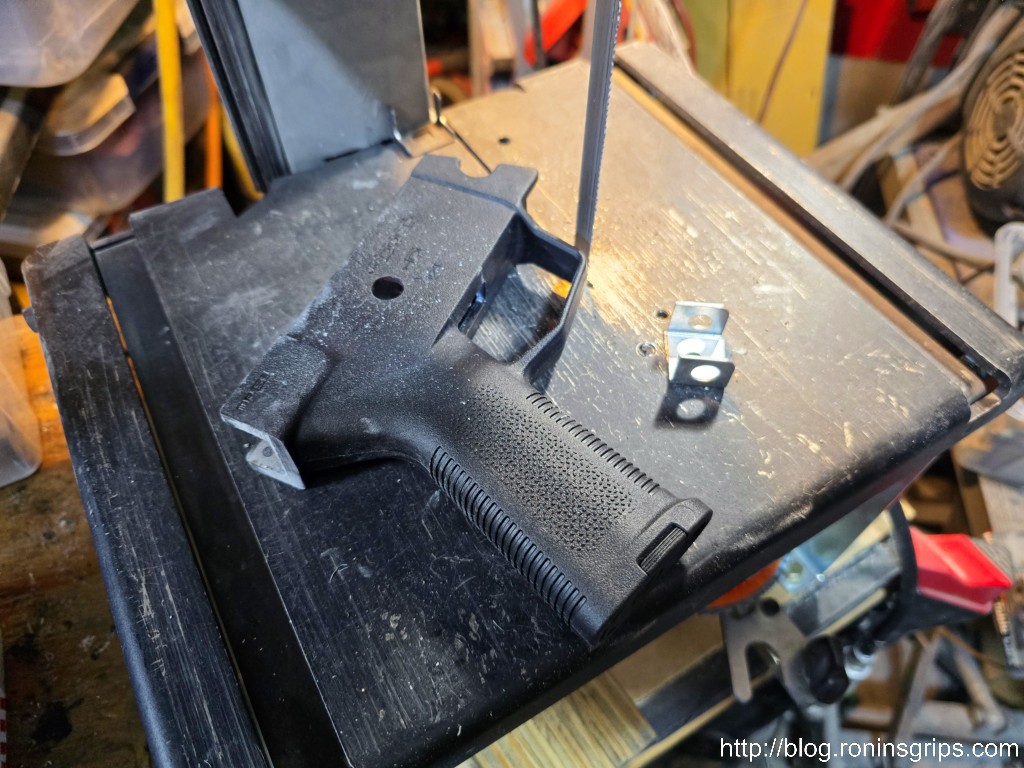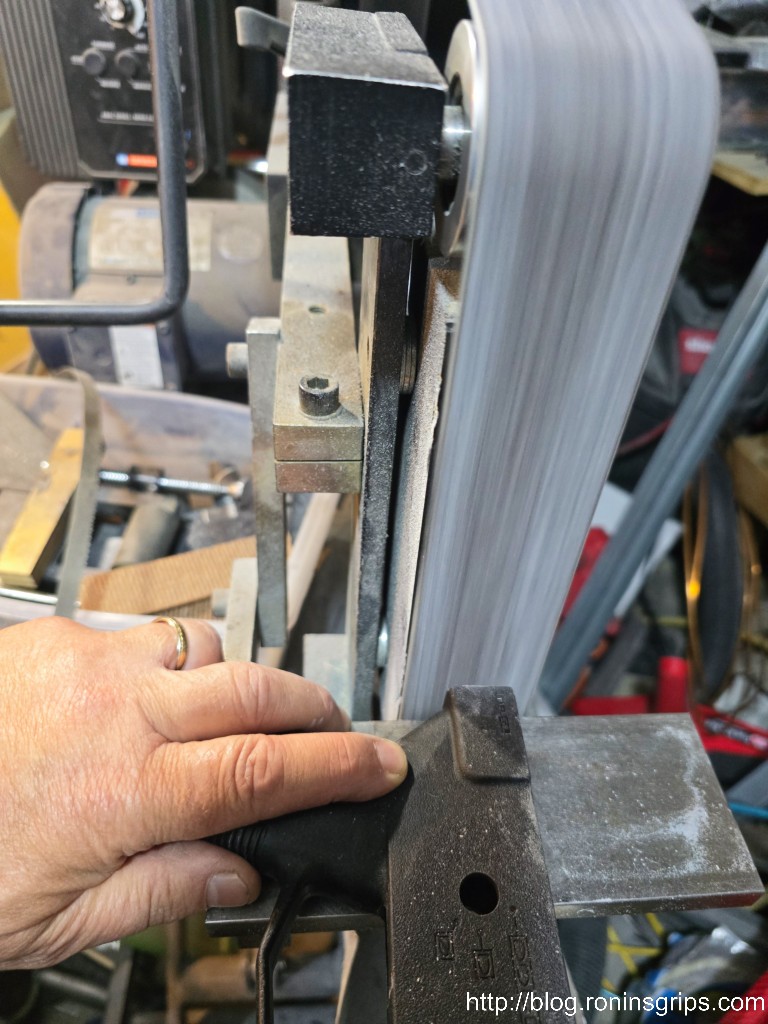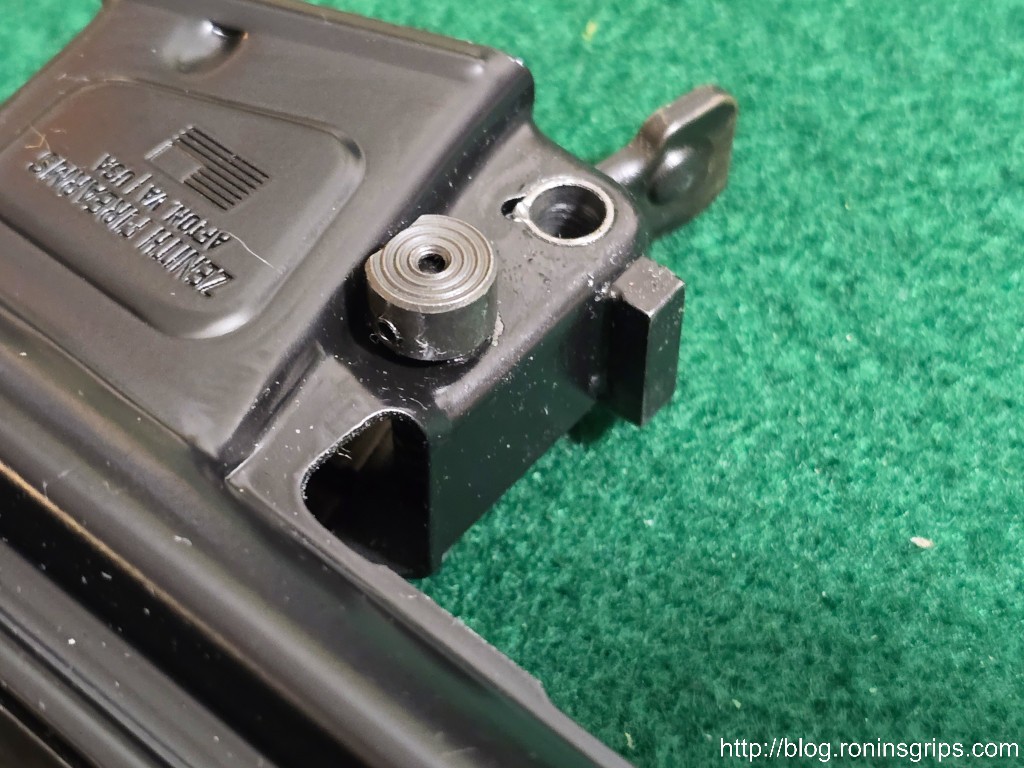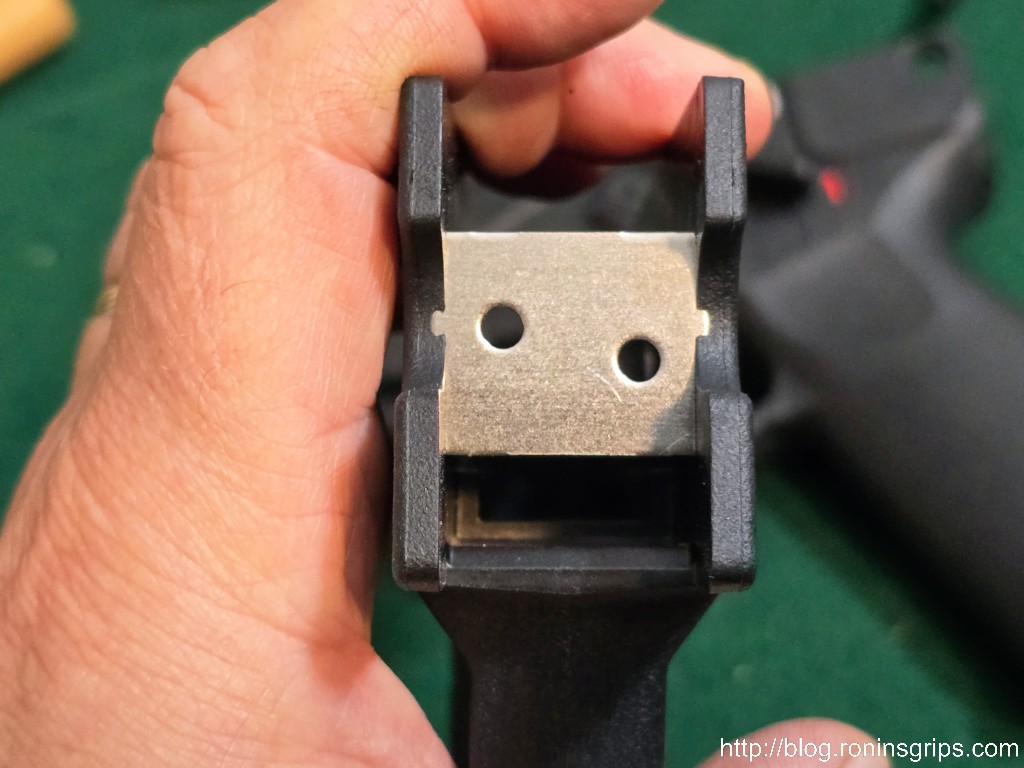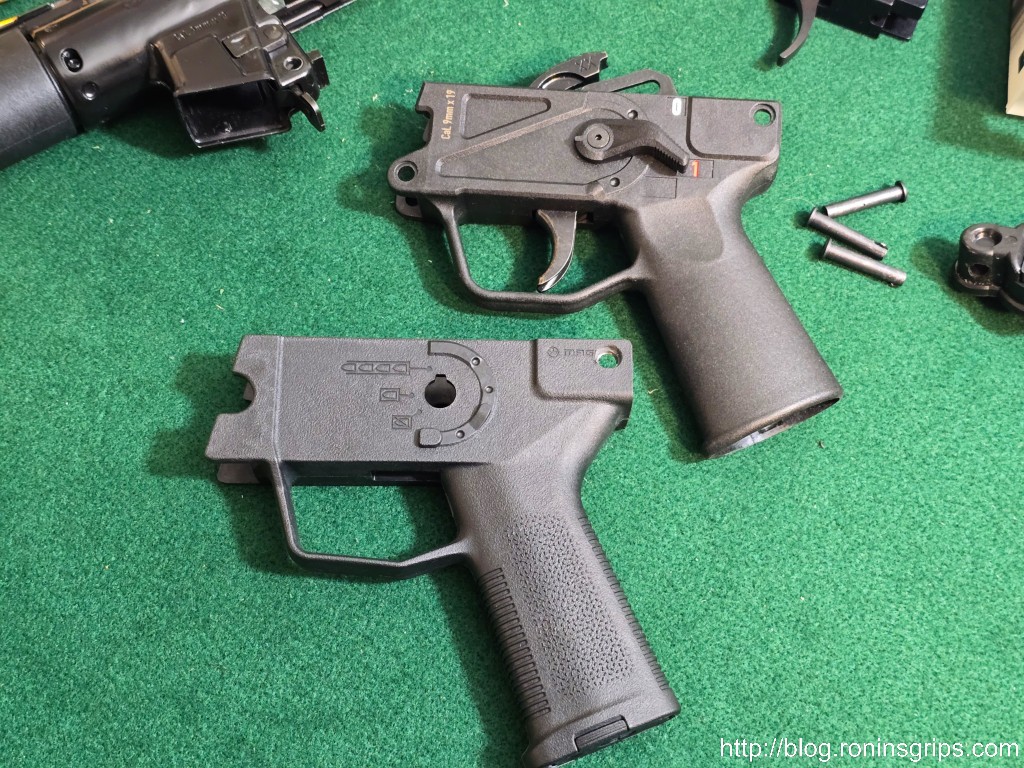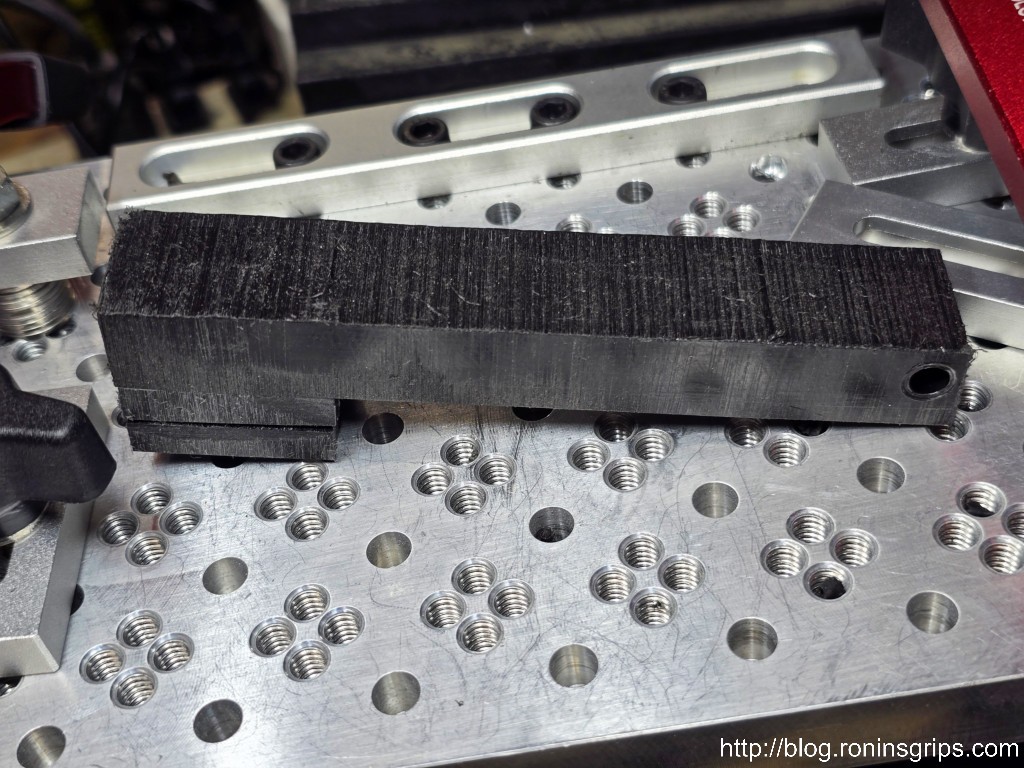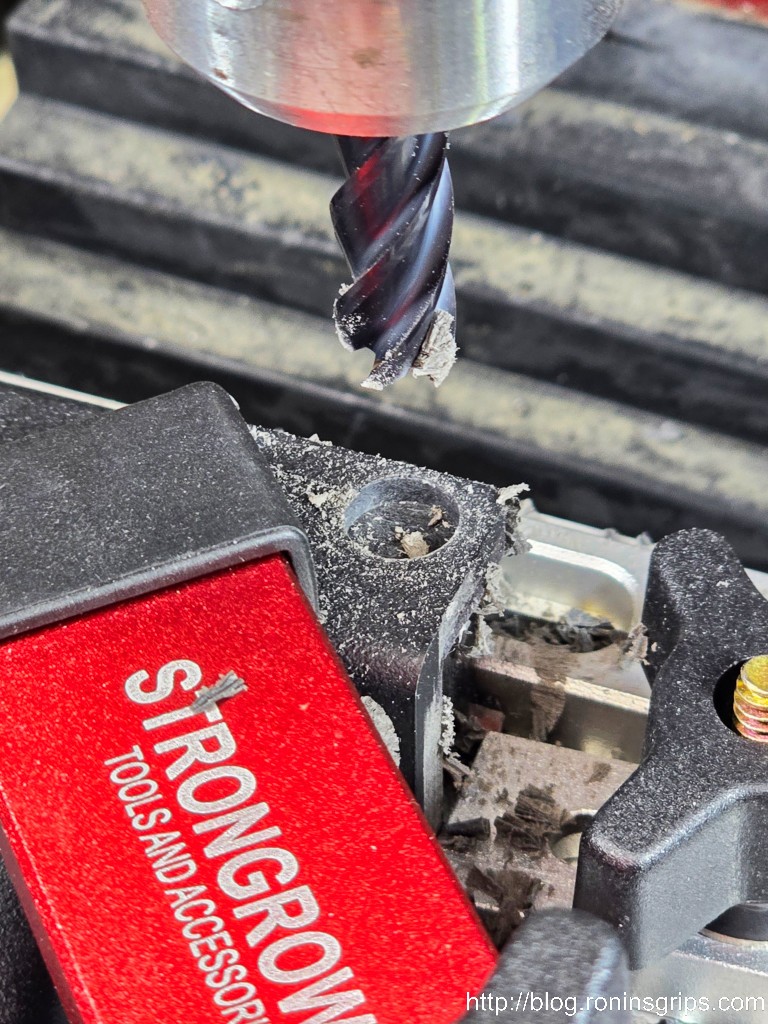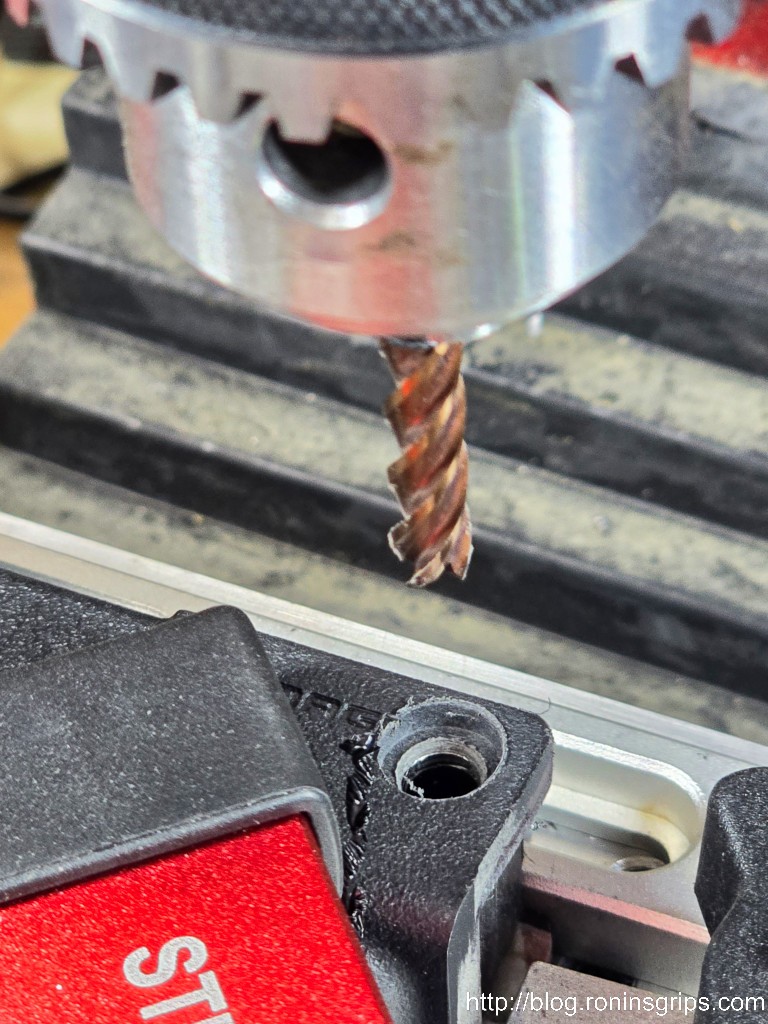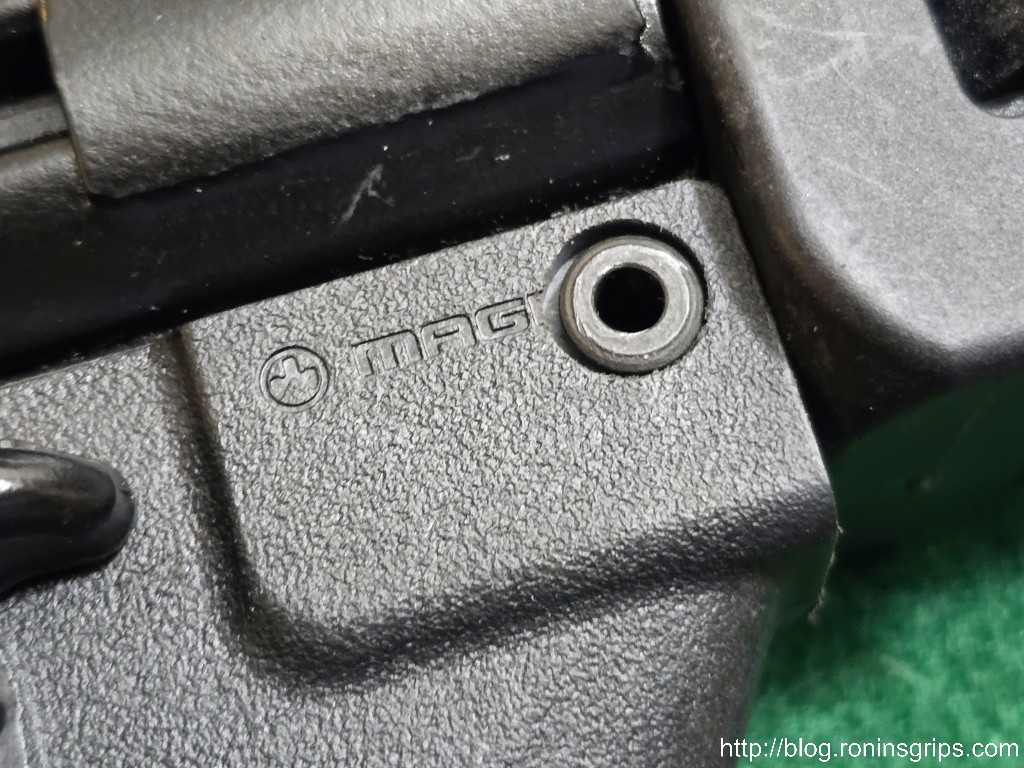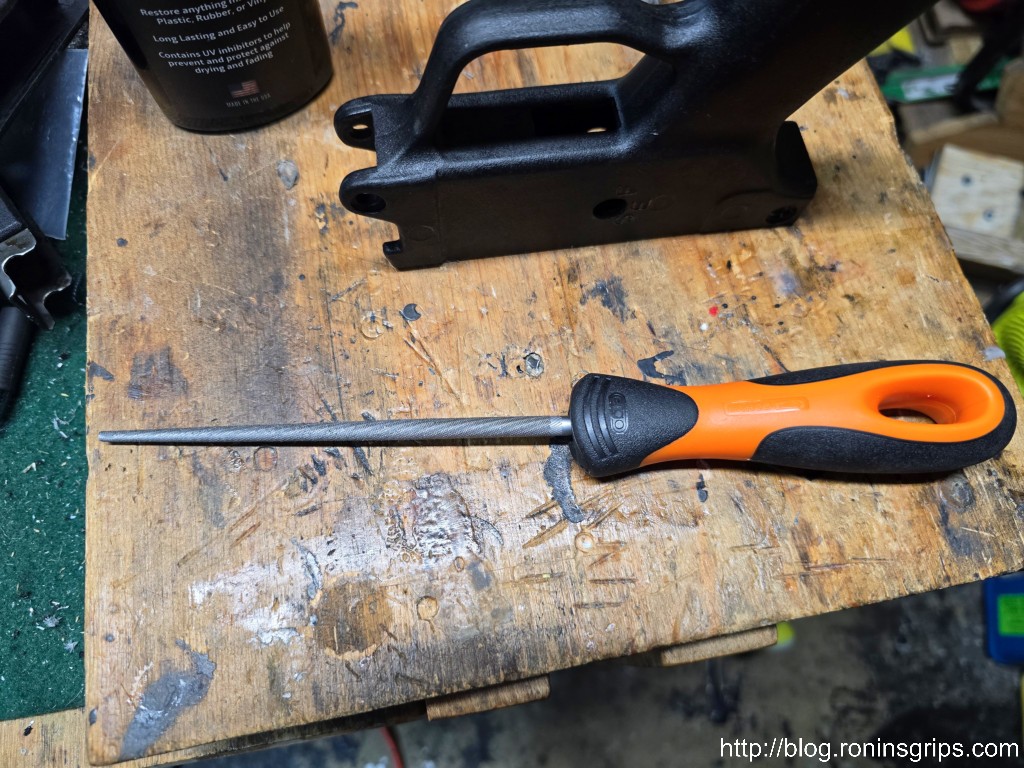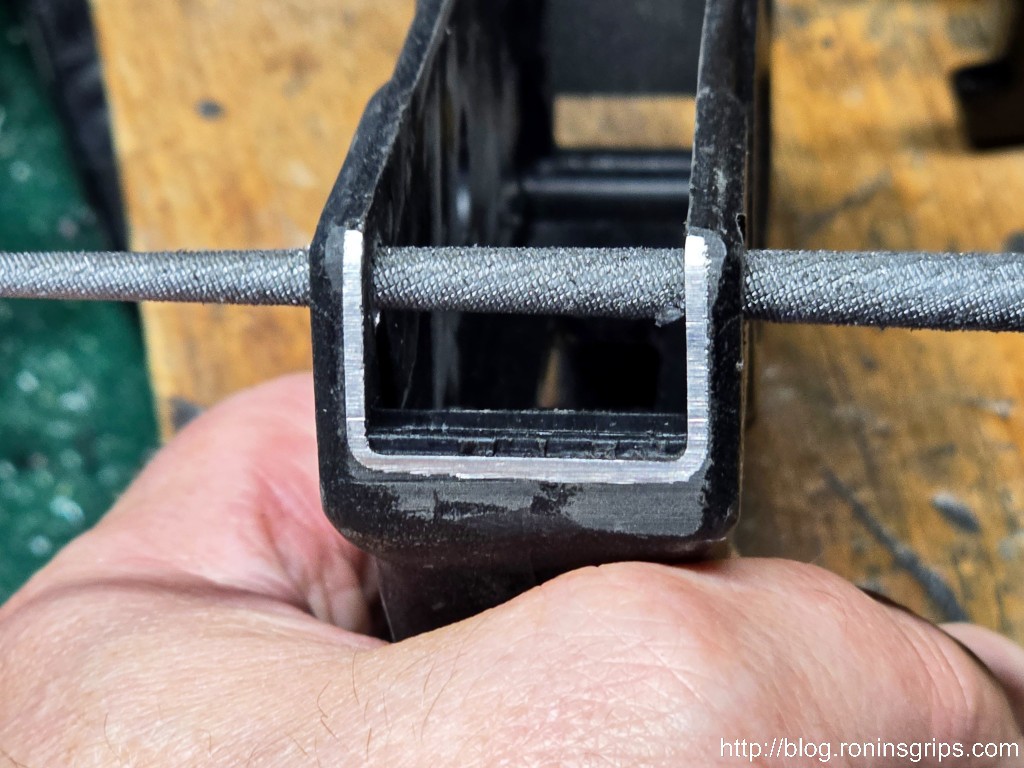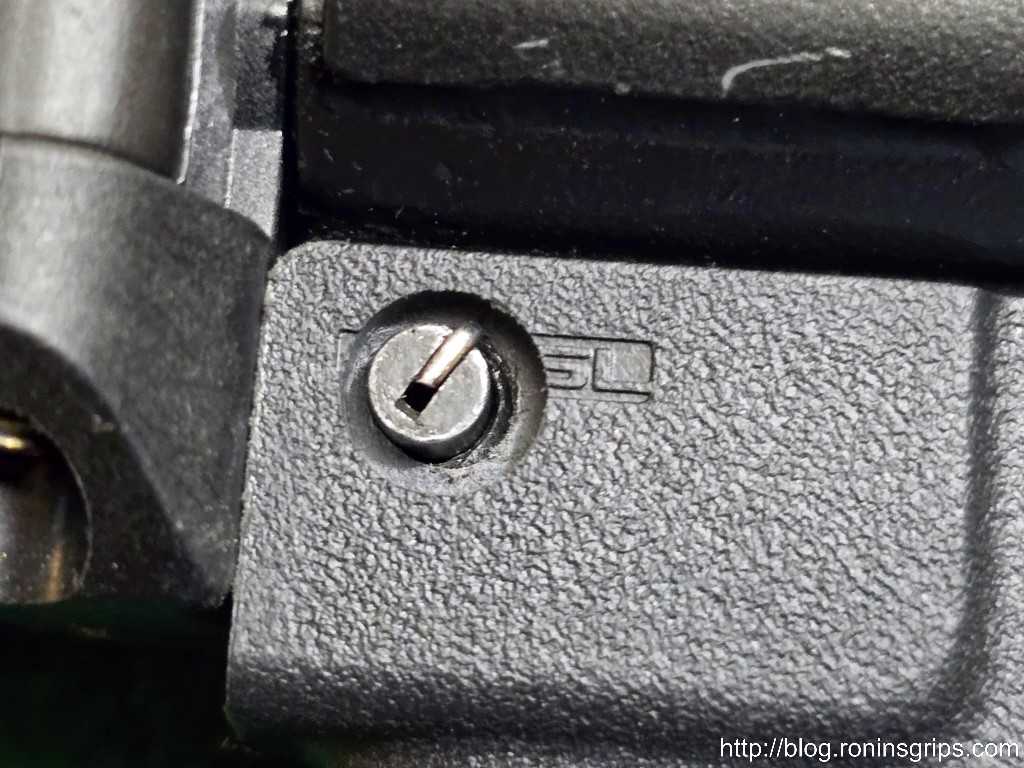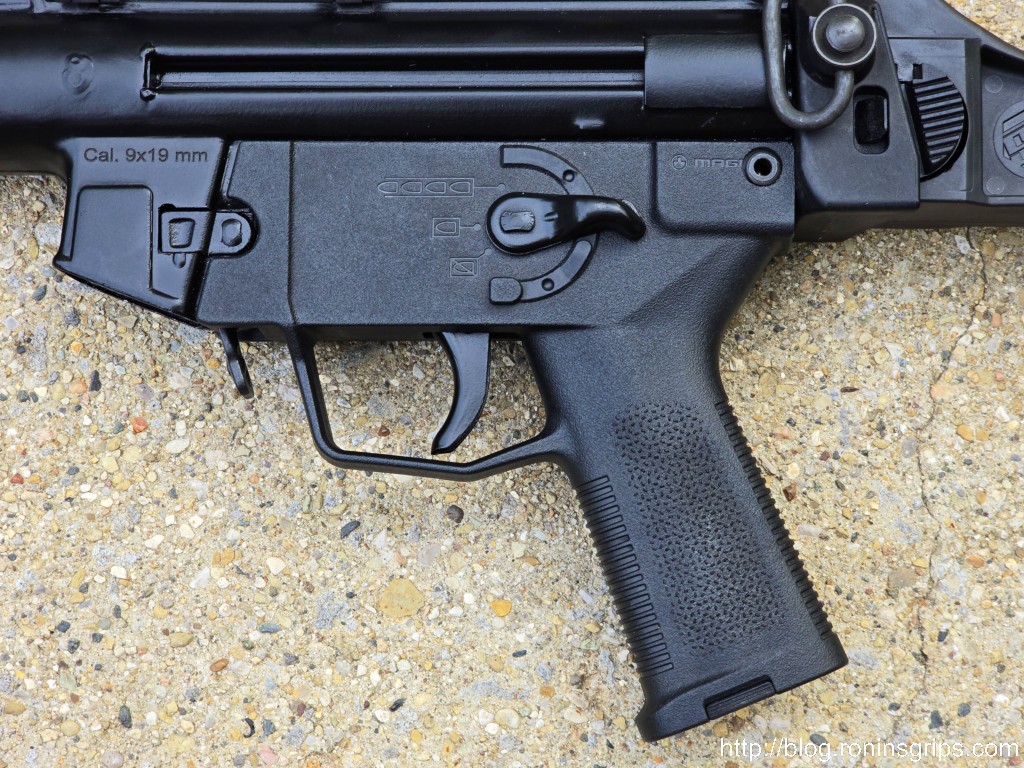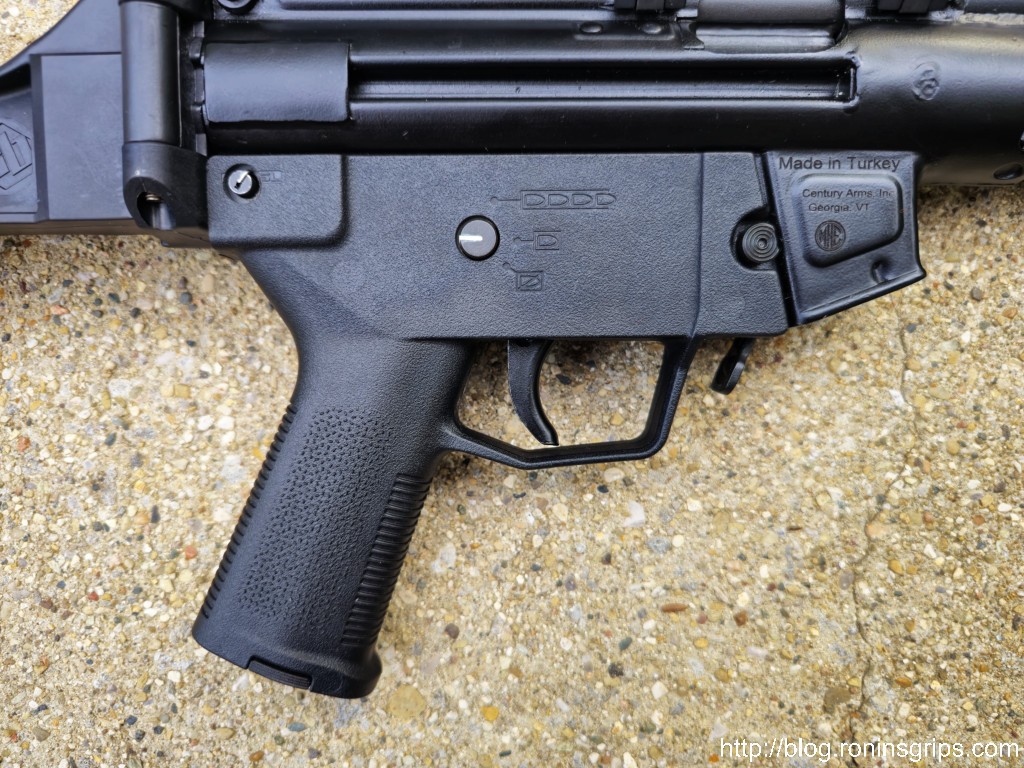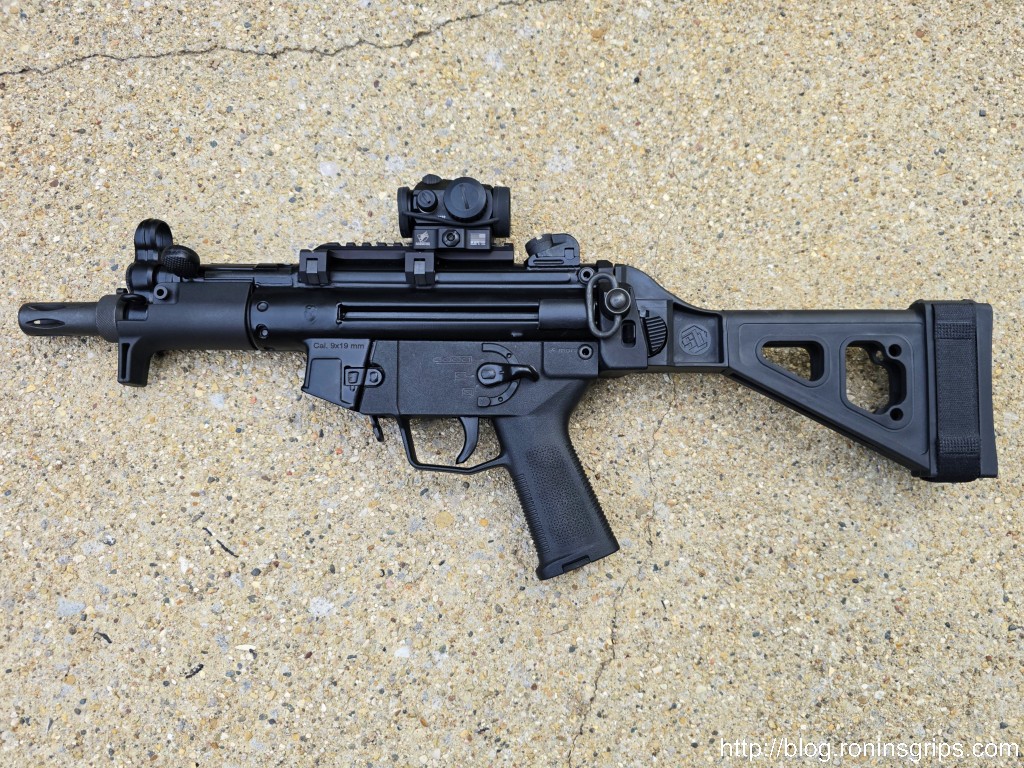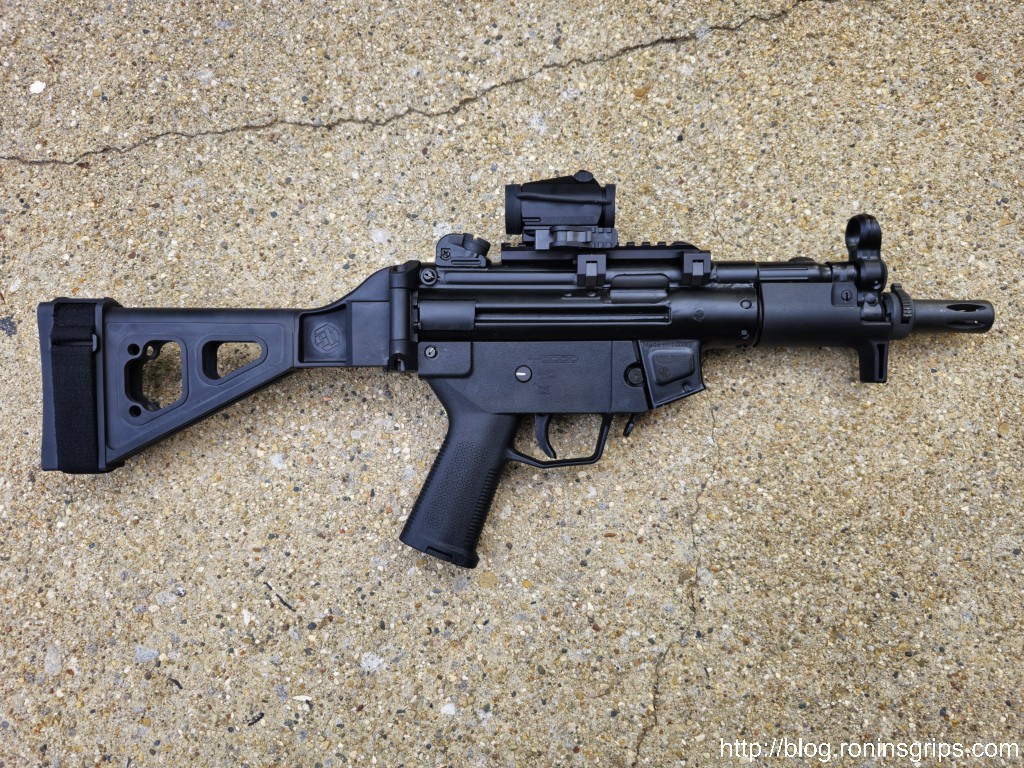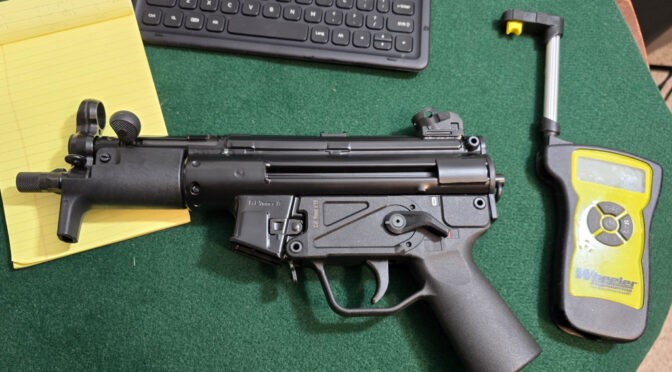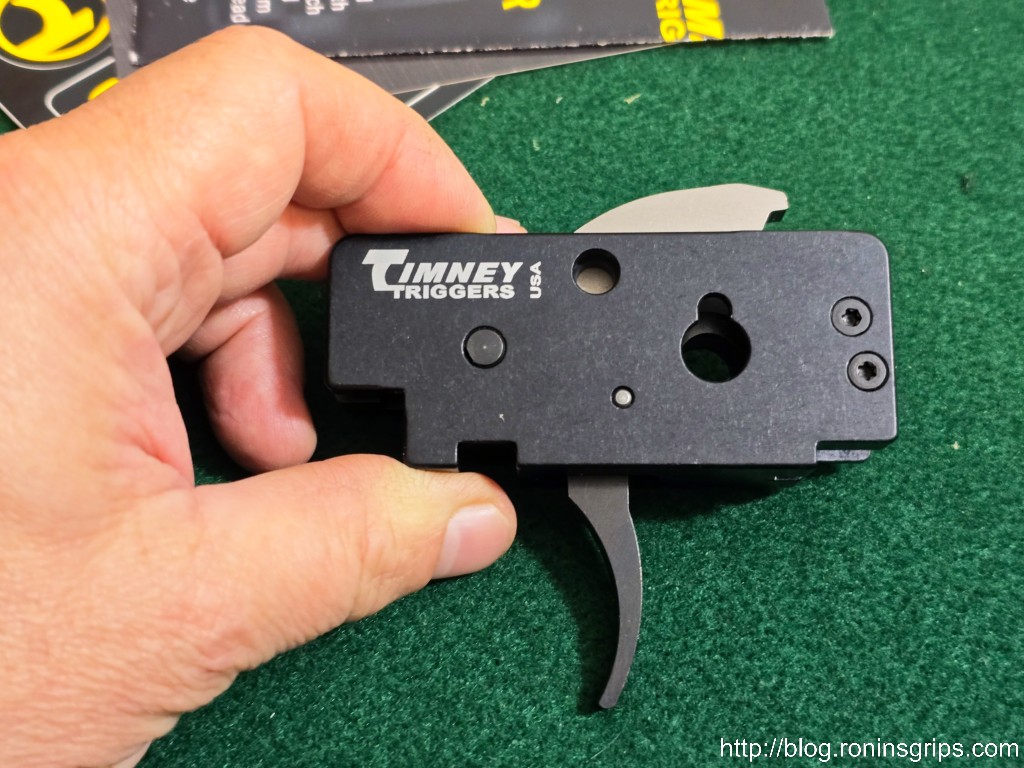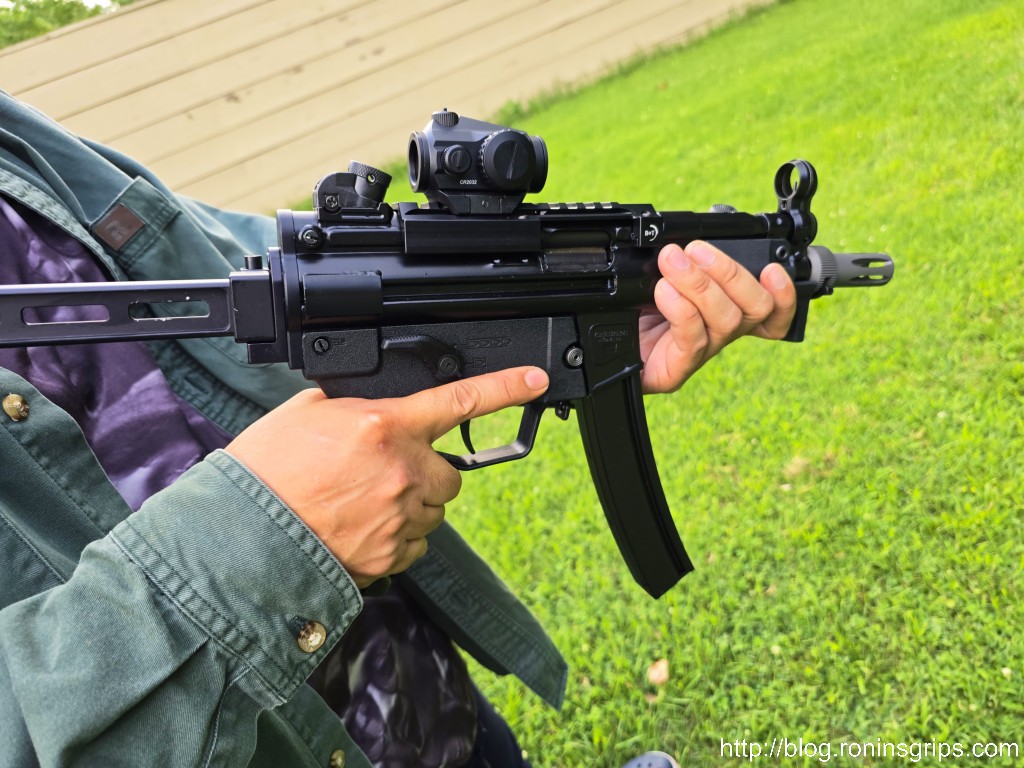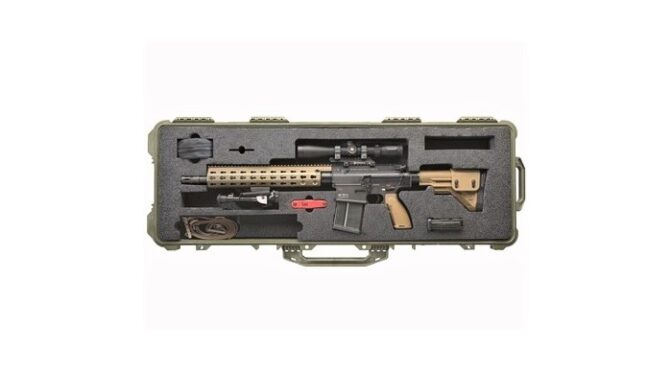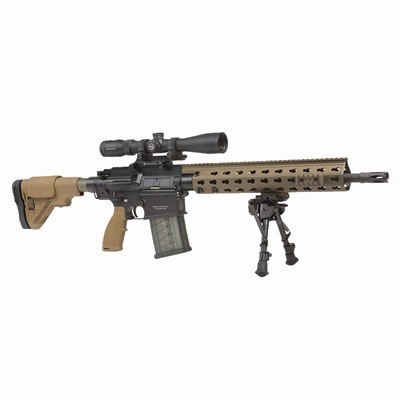The Heckler & Koch MP5 stands as an undisputed icon in the history of modern small arms. For over half a century, its distinctive silhouette has been synonymous with the world’s most elite counter-terrorism and special operations units.1 Its adoption by over 40 nations and its prominent role in high-stakes operations cemented its reputation as the preeminent submachine gun of the 20th century.2 However, the MP5’s enduring legacy is not solely a product of its revolutionary original design. Its remarkable longevity in the arsenals of these demanding professional users is the direct result of a dynamic and responsive aftermarket ecosystem.
This report will provide a comprehensive technical and tactical analysis of how this ecosystem emerged, not as a matter of simple modernization, but as a critical response to the evolving operational realities that exposed the latent deficiencies of the mid-20th-century platform. The original MP5, a masterpiece of 1960s engineering, was conceived for a world without standardized accessory rails, routine low-light combat, or the widespread use of body armor by operators. As tactical doctrine evolved, these omissions transformed from non-issues into critical capability gaps.
The aftermarket industry did not merely offer cosmetic enhancements; it provided essential engineering solutions that kept the platform viable. This analysis will deconstruct the symbiotic relationship between operator needs and industry innovation, tracing the catalysts for change from the rise of modern counter-terrorism to the paradigm shift in modularity brought about by the USSOCOM SOPMOD program. It will examine the key industry players—SureFire, Knight’s Armament Company, Brügger & Thomet, and others—and their foundational contributions. Ultimately, this report will demonstrate how a dedicated ecosystem of third-party manufacturers transformed the MP5 from a static, albeit brilliant, design into an adaptable and continuously relevant weapons system, ensuring its place in the specialized arsenals of the 21st century.4
Section 1: Foundational Analysis of the Heckler & Koch MP5 Platform
To understand the necessity and nature of the MP5’s aftermarket evolution, one must first conduct a thorough analysis of its foundational design. The platform’s initial success was rooted in a unique combination of advanced mechanical principles that set it apart from all other submachine guns of its era. Yet, within this brilliant design lay inherent limitations that would, decades later, necessitate a comprehensive modernization effort driven by external innovators.
1.1 The Engineering Core: Roller-Delayed Blowback and Closed-Bolt Operation
The heart of the MP5 is its roller-delayed blowback operating system, a direct and scaled-down descendant of the mechanism developed for the Mauser StG 45(M) assault rifle at the end of World War II and later perfected in Heckler & Koch’s own G3 battle rifle.1 This system represents a significant leap in sophistication compared to the simple (or “straight”) blowback mechanisms common to most submachine guns of the period, such as the Uzi or the Ingram MAC-10.1
In a simple blowback system, the breech is held closed only by the mass of the bolt and the pressure of the recoil spring. This requires a very heavy bolt to safely contain the pressures of firing, which in turn leads to a heavy weapon with substantial reciprocating mass, resulting in significant felt recoil and muzzle climb during automatic fire.8 The roller-delayed system circumvents this by using a mechanical disadvantage to slow the bolt’s opening. Upon firing, the cartridge case exerts rearward pressure on the bolt head. However, the bolt head cannot move rearward immediately because two rollers, housed within it, are cammed outwards into recesses in the barrel trunnion. For the bolt head to retract, these rollers must first be pressed inwards. This action is resisted by an angled “locking piece” situated behind the rollers. The rearward force of the cartridge case is thus translated into a much faster rearward movement of the heavier bolt carrier and locking piece assembly, while the bolt head itself is delayed for microseconds.10 This brief delay allows chamber pressures to drop to a safe level before extraction begins, all while using a significantly lighter bolt than a simple blowback design would require.7 The tangible result for the operator is a dramatic reduction in felt recoil and muzzle rise, allowing for exceptionally smooth and controllable automatic fire.7
Complementing this advanced operating system is the MP5’s closed-bolt firing cycle. Most contemporary submachine guns fired from an open bolt, where pulling the trigger releases a heavy bolt that slams forward, strips a round from the magazine, chambers it, and fires it in one continuous motion.14 While mechanically simple and beneficial for cooling during sustained fire, this process introduces significant weapon disturbance just before the shot breaks, making precise single shots difficult. The MP5, by contrast, fires from a closed and locked bolt, much like a rifle.4 The bolt is already forward and the round chambered when the trigger is pulled, meaning the only internal movement is the fall of a small hammer. This minimizes weapon movement and is the primary reason for the MP5’s legendary accuracy, a feature that made it the weapon of choice for surgical applications like hostage rescue, where a precise first shot was paramount.12 This combination of rifle-like accuracy in semi-automatic fire and machine pistol-like controllability in automatic fire made the MP5 a “precision tool” that fundamentally redefined the capabilities of a pistol-caliber firearm.4
1.2 Design Strengths for the Era (1960s-1970s)
When it was introduced in the mid-1960s, the MP5 was a thoroughly modern design that offered significant advantages over its predecessors and many of its contemporaries. Its ergonomics were a marked improvement, with a comfortable pistol grip and intuitive controls that were a scaled version of the G3 rifle, providing a common manual of arms.6 The weapon was relatively lightweight and compact, particularly the MP5A3 variant with its retractable stock, making it highly suitable for use in confined spaces like vehicles and buildings.7
Heckler & Koch engineered the MP5 for uncompromising reliability. The receiver was formed from stamped sheet steel, a robust and efficient manufacturing method, and the barrel was cold hammer-forged for exceptional durability and accuracy.3 To ensure performance in adverse conditions, the metal surfaces were phosphated and then coated with a baked-on lacquer finish, providing high resistance to corrosion and wear.19 The design was validated to function reliably in extreme temperatures, from −40°C to +43°C.7
The sighting system was another area of clear superiority. The MP5 featured a hooded front post and a rotating rear diopter drum, offering four different apertures for varying light conditions and user preference.3 This system was far more precise than the simple open sights found on most submachine guns and contributed greatly to the weapon’s practical accuracy.18 The platform also exhibited a degree of modularity, with interchangeable trigger groups offering different fire control options (e.g., safe/semi/full-auto “SEF” groups or burst-fire variants) and the choice between a fixed polymer stock (A2 models) or a retractable stock (A3 models).1
1.3 Latent Deficiencies: The Seeds of Aftermarket Necessity
Despite its advanced design, the MP5 was a product of its time. The very features that made it successful in the 1960s and 70s contained latent deficiencies that would become significant liabilities as military and law enforcement tactics evolved over the subsequent decades. These were not design flaws in the context of the era, but rather a lack of foresight into the future of tactical operations.
The single greatest deficiency was the complete absence of any native capability for mounting accessories. The MP5’s stamped steel receiver was a smooth, enclosed tube with no integrated rails or standardized attachment points.8 In an era before the proliferation of weapon-mounted optics, lights, and lasers, this was not a consideration. By the 1990s, however, this lack of a universal interface became the platform’s primary handicap, making the addition of mission-essential equipment a complex and non-standardized challenge.22
The weapon’s ergonomics, while excellent for their time, were also a product of a bygone era. The length-of-pull on both the fixed A2 stock and the fully extended A3 retractable stock was designed for an operator wearing little more than a shirt.23 The widespread adoption of ballistic body armor by police SWAT teams and special operations forces in the 1980s and 1990s rendered these stocks too long. Operators wearing bulky vests were forced into an awkward, bladed shooting stance that compromised stability and weapon control, a problem that H&K themselves later acknowledged and addressed in the updated MP5 MLI variant with its multi-position stock.15 Furthermore, early “SEF” trigger groups featured a long, rotating selector lever that was not truly ambidextrous or as ergonomic as later designs.3
Finally, the excellent iron sights, for all their precision, were fundamentally limited. They were optimized for 25-meter engagements and were not designed for field adjustment to other ranges.3 More importantly, their design and the lack of a top rail on the receiver made it impossible to co-witness them with an optic. Adding a red dot sight or other optic required a cumbersome “claw mount” that positioned the optic high above the bore axis, forcing an inconsistent and uncomfortable “chin weld” rather than a solid cheek weld, and offered no backup sighting capability if the optic failed.25 These latent deficiencies, baked into the core design of the MP5, created a clear and compelling need for the aftermarket solutions that would ultimately define its modern identity.
The very engineering brilliance that defined the MP5 also presented its greatest challenge to modernization. The complex, multi-part roller-delayed blowback system, while arguably “overkill” for a pistol-caliber weapon, dictated a receiver design that was fundamentally non-modular.4 Unlike the AR-15 platform, which was conceived with a distinct upper and lower receiver that could be easily separated and modified, the MP5’s receiver is a single, complex, welded and pinned stamped-steel assembly.27 This architectural difference is profound. Upgrading an AR-15’s handguard to a railed version is a simple matter of unscrewing a barrel nut and replacing a component. Modernizing the MP5 required a different philosophy; accessories could not simply replace a part, they had to be added onto the existing structure. This fundamental engineering constraint shaped the entire first generation of MP5 accessories, leading directly to the development of solutions like receiver-gripping claw mounts for optics and full handguard replacements for lights and lasers, a far more complex proposition than the simple bolt-on modularity of its rifle-caliber counterparts.
Section 2: The Catalysts for Change: Evolving Mil/LE Doctrine and Threats
The demand for an MP5 aftermarket ecosystem did not arise in a vacuum. It was driven by a series of seismic shifts in the operational landscape for military special forces and law enforcement tactical units. Three primary catalysts—the rise of modern counter-terrorism, the proliferation of body armor, and a revolutionary new philosophy of weapon modularity—converged in the 1980s and 1990s to create an undeniable imperative for the platform’s evolution.
2.1 The Counter-Terrorism Proving Ground and the Birth of a Need
The 1972 Munich Olympics Massacre was a watershed moment for global security forces. The tragic failure of conventional police to effectively respond to a determined terrorist attack starkly illustrated the need for new, specialized units trained and equipped for high-stakes hostage rescue and counter-terrorism (CT) operations.17 This led to the formation of elite units like Germany’s GSG 9, France’s GIGN, and the proliferation of Special Weapons and Tactics (SWAT) teams in the United States.30 These new organizations required a weapon that was compact, controllable, and precise—a perfect match for the MP5’s capabilities.17
While the MP5 saw quiet adoption by these units throughout the 1970s, it was thrust onto the world stage on May 5, 1980. The live television broadcast of the British Special Air Service (SAS) storming the Iranian Embassy in London during Operation Nimrod had a transformative effect on the weapon’s status.2 Images of the black-clad operators, MP5s at the ready, became iconic overnight.2 This single, highly successful operation created an explosion in global demand. Law enforcement and military units worldwide, seeking to emulate the perceived professionalism and effectiveness of the SAS, made acquiring the MP5 a top priority.5
Crucially, these same iconic images also revealed the platform’s first major deficiency in a modern tactical context. Photographs from Operation Nimrod clearly show SAS operators with large, cylindrical flashlights—likely Maglites or similar models—crudely attached to the top of their MP5s with hose clamps or other improvised mounts.3 This was the first high-profile demonstration of a critical, emerging capability gap: the need for integrated, weapon-mounted illumination for low-light combat. These early, ad-hoc solutions were deeply flawed, often obstructing the weapon’s iron sights and compromising the operator’s ability to aim effectively—a severe tactical trade-off that underscored the urgent need for a professional, purpose-built solution.25
2.2 The Ballistic Imperative and the Rise of Body Armor
While the MP5 was cementing its role in the CT world, a new threat was emerging on the streets and battlefields: the increasing availability of effective body armor. Throughout the 1980s and 1990s, the proliferation of soft body armor capable of defeating standard pistol-caliber rounds began to call into question the terminal effectiveness of the MP5’s 9x19mm Parabellum cartridge.12 For law enforcement, this concern became a brutal reality during the 1997 North Hollywood Shootout. Two heavily armed bank robbers, protected by extensive body armor, engaged Los Angeles police officers in a prolonged firefight, absorbing numerous hits from 9mm pistols and 12-gauge shotguns with little effect.17
The North Hollywood incident was a doctrinal inflection point for American law enforcement. It graphically demonstrated the inadequacy of pistol-caliber weapons against protected threats and triggered a widespread tactical shift within SWAT teams away from submachine guns like the MP5 and towards 5.56x45mm AR-15-based carbines, such as the M4.2 These rifle-caliber weapons could easily defeat soft body armor and offered superior range and barrier penetration capabilities.14
Heckler & Koch was not ignorant of these concerns. In the early 1990s, responding directly to a request from the American FBI, the company developed and released the MP5/10 and MP5/40, chambered in the more powerful 10mm Auto and .40 S&W cartridges, respectively.4 These variants were intended to provide a direct answer to the 9mm’s perceived lack of “stopping power.” However, both were ultimately discontinued by 2000, suggesting that up-calibering the finely tuned roller-delayed blowback system introduced unacceptable trade-offs in reliability, controllability, or parts longevity.16 This failure by the original equipment manufacturer (OEM) to provide a viable ballistic upgrade left the flagship 9mm MP5 increasingly vulnerable to replacement by more powerful platforms.
2.3 The “SOPMOD Effect”: The New Paradigm of Weapon Modularity
The final, and perhaps most significant, catalyst for the MP5’s aftermarket evolution came from the United States Special Operations Command (USSOCOM). In 1989, USSOCOM initiated the Special Operations Peculiar MODification (SOPMOD) program, a project aimed at creating a standardized kit of accessories for the M4A1 carbine.33 This was a revolutionary concept that fundamentally changed how professional end-users viewed their primary weapon. Instead of a fixed tool, the rifle became a modular platform. The SOPMOD kit provided operators with a suite of mission-enhancing accessories—optics, infrared aiming lasers, visible lights, vertical foregrips, and suppressors—that could be easily attached and detached to configure the weapon for any operational requirement.33
The technological heart of the SOPMOD program was the Rail Interface System (RIS), developed by Knight’s Armament Company (KAC).33 The KAC RIS replaced the M4A1’s standard polymer handguard with a quad-rail forearm featuring Mil-Std 1913 Picatinny rails, creating a universal, non-proprietary mounting surface.37 This seemingly simple innovation was transformative. It standardized the interface between the weapon and its accessories, allowing an operator to mount an Aimpoint CompM2 red dot sight, an AN/PEQ-2 infrared laser/illuminator, and a SureFire weaponlight in a secure, repeatable, and ergonomically sound configuration.38
The SOPMOD program created a new professional standard. The immense tactical advantage conferred by a fully accessorized M4A1 became the baseline expectation for any primary weapon system. An operator who had just returned from a mission using a SOPMOD M4 would not accept the limitations of a “slick” MP5 on their next assignment. This created immense institutional pressure from within the world’s most elite units—the MP5’s core user base—to find a way to bring the submachine gun up to the new SOPMOD standard of modularity and capability.
The convergence of these factors created a perfect storm of market demand. The MP5’s very success in the high-profile CT arena, which drove its widespread adoption, also placed it in the hands of the most sophisticated and demanding end-users in the world. These were the same units pioneering new tactics in low-light combat and close-quarters battle, and thus they were the first to experience the platform’s inherent limitations on a large scale. Just as these limitations became undeniable, the SOPMOD program for the M4 provided a clear, tangible template for the solution. The aftermarket industry was not just responding to a vague desire for modernization; it was responding to a specific, well-defined set of capability gaps identified by a highly influential customer base that now knew exactly what it wanted.
Furthermore, the aftermarket thrived precisely where the OEM, Heckler & Koch, appeared to falter. Faced with demands for improved ballistics and enhanced modularity, H&K focused its internal efforts on the former with the short-lived MP5/10 and MP5/40, and ultimately chose platform replacement over adaptation with the introduction of the UMP submachine gun in 1999.3 This strategy left the critical and more immediately solvable problem of accessory integration largely unaddressed by the factory during the crucial decade of the 1990s. This created a market vacuum that innovative third-party companies were perfectly positioned to fill, effectively providing the modernization path that the original manufacturer did not.
Section 3: The Aftermarket Response: Key Players and Foundational Upgrades (The “Classic” Era: ~1985-2005)
The tactical imperatives of the 1980s and 90s created a fertile ground for innovation. A handful of pioneering companies recognized the capability gaps in the factory MP5 and developed foundational products that would define the first generation of its modernization. These were not incremental improvements but transformative solutions that directly addressed the core problems of illumination, modularity, and sighting systems.
3.1 Case Study: SureFire and the Integrated Illumination Solution
The challenge of effectively mounting a light to the MP5 was the first major hurdle to be professionally addressed. The solution came from Laser Products Corporation, founded in 1979 by Dr. John Matthews, a company that would later become synonymous with tactical illumination: SureFire.41 Rather than creating a clamp or mount for an existing handheld flashlight, SureFire developed a truly integrated system: the Dedicated Forend WeaponLight.
The SureFire 628 series (for the full-size MP5) and the more compact 328 series (for the MP5K) were revolutionary products.42 They completely replaced the factory polymer or aluminum handguard with a purpose-built unit that housed a high-intensity incandescent (and later, a far more powerful and durable LED) light source.18 This design was a masterclass in tactical ergonomics. It featured a momentary-on pressure pad switch integrated into the right side of the forend and a constant-on rocker switch on the left.42 This layout allowed the operator to activate the light without altering their normal firing grip, a critical advantage in high-stress situations.48 A patent for this type of integrated forend lighting system was granted in 1989, cementing its innovative status.49 For decades, the SureFire 628 was the gold standard for professional MP5 users, providing the first truly seamless and effective solution for low-light operations.
3.2 Case Study: Knight’s Armament Company and the Rail Adapter System (RAS)
While SureFire solved the illumination problem, the broader issue of modularity remained. The solution to this challenge emerged from the same company that was defining modularity for the US military: Knight’s Armament Company (KAC). Founded by C. Reed Knight Jr., KAC’s work with USSOCOM on the SOPMOD program, born from the observation of troops duct-taping accessories to their rifles, had led to the creation of the M4 Rail Interface System (RIS).50
KAC applied this same philosophy to the MP5, developing the MP5 Rail Adapter System (RAS), part number 97198.52 This product was arguably the single most important development in the history of MP5 modernization. The KAC RAS was a drop-in, two-piece aluminum handguard that provided Mil-Std 1913 Picatinny rails at the 3, 6, 9, and 12 o’clock positions.54 This simple, elegant solution broke the MP5 free from its proprietary, non-modular design. For the first time, an operator could mount the exact same standardized SOPMOD accessories—an AN/PEQ-2 laser, a vertical foregrip, and a separate weaponlight—that they used on their M4A1 carbine.36 This created critical commonality in equipment, training, and logistics for units that employed both weapon systems. The KAC RAS transformed the MP5 from a firearm into a true weapons system, laying the groundwork for all subsequent modular handguards.
3.3 Case Study: Brügger & Thomet, The European Innovator
In Europe, a similar modernization effort was being led by the Swiss firm Brügger & Thomet (B&T). Founded in 1991 by Karl Brügger and Heinrich Thomet, B&T began as a specialized suppressor manufacturer but quickly leveraged its engineering expertise to become a key supplier of tactical accessories for European military and police forces, which were major MP5 users.57
B&T became a one-stop-shop for comprehensive MP5 upgrades. They developed a line of railed handguards, including their well-known Tri-Rail handguard (BT-21174), which served the same function as the KAC RAS and became a direct competitor.59 Recognizing the sighting deficiencies of the platform, B&T also engineered a range of low-profile optic mounts that provided a more stable and lower-height solution for attaching red dot sights than many early claw mounts.58 Their deep familiarity with the platform was so extensive that in 1996, B&T even produced its own semi-automatic variant, the BT96, to navigate restrictive Swiss firearms laws.58 B&T’s extensive catalog of high-quality stocks, mounts, and handguards established them as the premier European source for MP5 modernization, a position they still hold today.
3.4 Enhancing Target Acquisition: The Optics Revolution
The development of reliable, compact, and battery-powered red dot sights, pioneered by the Swedish company Aimpoint in 1975, offered a revolutionary improvement in speed and ease of target acquisition over traditional iron sights.62 For the close-quarters engagements typical of the MP5’s role, the ability to maintain a target-focus with both eyes open and simply place a dot on the threat was a massive tactical advantage.62
US Special Forces began widely adopting red dot sights in the mid-1990s, with early models like the Aimpoint 5000 giving way to the Aimpoint CompM2, which was adopted by the U.S. Army as the M68 Close Combat Optic (CCO) and became a standard issue SOPMOD item by 2000.37 To mount these optics on the MP5, a “claw mount” was required. This type of mount attaches to the small, stamped recesses on the top of the MP5’s receiver. Early designs were often bulky, heavy, and could be knocked out of alignment, failing to hold a consistent zero. This created a demand for more robust solutions, which companies like B&T, and later American firms like Midwest Industries, fulfilled by producing low-profile, lightweight, and rock-solid mounts that clamped securely to the receiver, finally providing a reliable platform for modern optics.26
The following table provides a concise summary of the cause-and-effect relationships that drove the first two decades of MP5 upgrades, linking the evolving tactical problems with the specific engineering solutions and pioneering companies that defined this classic era of modernization.
| Era | Primary Tactical Driver | Identified Platform Deficiency | Aftermarket Solution Category | Pioneering Products/Manufacturers |
| 1980s–Early 1990s | Rise of specialized CT/SWAT units; Low-light/night operations become standard doctrine. | No native method for mounting illumination tools; ad-hoc solutions obstruct sights. | Integrated Weaponlight Forend | SureFire 628 Series |
| Mid-1990s–Early 2000s | USSOCOM SOPMOD program establishes a new standard for modularity; Need for accessory standardization across platforms. | No native method for mounting optics; No universal accessory interface. | Receiver Claw Mounts for Optics; Railed Handguards (Picatinny) | B&T Optic Mounts; Knight’s Armament Company MP5 RAS; B&T Tri-Rail Handguard |
Section 4: The Modernized MP5: Maturation and Proliferation of the Ecosystem (c. 2005-Present)
The foundational upgrades of the classic era solved the MP5’s most pressing deficiencies, proving that the half-century-old design could be adapted for modern warfare. The period from the mid-2000s to the present has been characterized by the maturation and proliferation of this aftermarket ecosystem. This new generation of upgrades has focused on refinement, weight reduction, and improved ergonomics, further closing the gap between the MP5 and more contemporary platforms. This phase was also critically enabled by the expansion of the market itself through the availability of high-quality clones.
4.1 Engineering Challenges: Stamped Receivers vs. AR-15 Modularity
Designing accessories for the MP5 presents unique engineering challenges not found in more inherently modular platforms like the AR-15. The MP5’s receiver is its core structural component, manufactured from stamped and welded sheet metal.19 While strong and efficient to produce, this process can result in minor dimensional variations from one firearm to another. Furthermore, the primary mounting surfaces—the claw mount recesses for optics and the handguard attachment points—are less precise and offer less rigidity than the monolithic, machined upper receiver of an AR-15.22 An improperly manufactured or installed AK-style side rail, which shares principles with the MP5 claw mount, can be visibly canted, requiring significant optic adjustment to compensate.68
This stands in stark contrast to the AR-15. The AR platform was designed from the outset for interchangeability. Its architecture, featuring distinct upper and lower receivers joined by two pins, a standardized barrel nut interface for handguards, and a flat-top upper receiver with an integral Picatinny rail, makes it akin to “Legos for adults”.28 This design allows for a vast and competitive market where hundreds of manufacturers can produce components to a common, precise specification, ensuring a high degree of compatibility.27 An AR-15 can be completely reconfigured in minutes with simple tools. The MP5, by contrast, requires more specialized and cleverly designed accessories to work around its fixed, less-precise architecture. This engineering reality means the MP5 aftermarket is, by necessity, smaller and more specialized than the sprawling AR-15 ecosystem.
4.2 Ergonomics for the 21st Century Operator
As the classic era solved the primary mounting problems, the modern era focused on refining the operator’s interface with the weapon. The issue of stock length for users with body armor was a key area of improvement. Companies like B&T and the Swedish firm Spuhr developed multi-position collapsible and folding stocks that offered adjustable length-of-pull, allowing a custom fit for any operator or armor configuration.23 Spuhr’s design also incorporated an adjustable cheek riser, a critical feature for achieving a proper and consistent sight picture when using optics mounted high on claw mounts.23
American manufacturer Magpul Industries, renowned for its ergonomic polymer accessories for the AR-15, eventually turned its attention to the MP5 platform.72 They introduced a comprehensive suite of ergonomic upgrades that brought the weapon’s handling into the 21st century. The Magpul SL Stock provided a modern, adjustable solution, while the SL Grip Module offered a more vertical grip angle, similar to modern carbines, and improved texturing for better control.73 Their Enhanced Selector Kit (ESK) provided an ambidextrous safety selector with improved ergonomics, making manipulation faster and more intuitive.72 These products allowed agencies to significantly upgrade the handling characteristics of their existing MP5 inventories at a relatively low cost.
4.3 Beyond Picatinny: The Advent of M-LOK and Lightweight Systems
By the 2010s, the industry trend in rifle handguards began to shift away from the heavy, cheese-grater-like Picatinny quad-rails of the SOPMOD era. New, lighter, and more user-friendly negative-space attachment systems, primarily Magpul’s M-LOK, became the new standard. These systems provided a smooth, slim handguard surface, with accessories being mounted only where needed via standardized slots.
The MP5 aftermarket quickly adapted to this trend. Companies like Midwest Industries developed lightweight aluminum M-LOK handguards for the MP5.75 These second-generation modular handguards offered significant weight savings and a much more comfortable grip profile compared to the legacy KAC and B&T quad-rails, while still providing ample space for mounting lights, lasers, and grips.65 This evolution mirrored the broader trends in the small arms industry and demonstrated the MP5 aftermarket’s continued ability to keep the platform current.
4.4 Market Expansion and the Role of High-Quality Clones
For much of its history, access to the MP5 platform for smaller law enforcement agencies or civilian purchase was severely restricted by high cost and limited availability from H&K.78 This dynamic began to change dramatically with the emergence of high-quality, reverse-engineered or licensed clones.
Manufacturers such as MKE in Turkey (which produced MP5s under H&K license and whose firearms were imported by companies like Century Arms and, formerly, Zenith), PTR Industries in the United States, and Zenith Firearms’ own US-based production, began offering MP5-pattern firearms at a fraction of the cost of a genuine H&K.2 These clones were not crude copies; many were built on H&K-spec tooling and demonstrated excellent reliability, making the MP5 platform accessible to a vastly larger market.66
This explosion in the number of MP5-pattern firearms in circulation had a profound effect on the aftermarket. It created a larger, more stable, and more diverse customer base. This, in turn, lowered the risk and increased the potential reward for accessory companies to invest in research and development for the platform. The entry of major players like Magpul into the MP5 market was likely enabled by the critical mass of firearms created by the clone manufacturers. This created a powerful, self-reinforcing cycle: the availability of affordable clones created the demand that fueled aftermarket innovation, and the availability of modern, sophisticated accessories made the clones a more viable and attractive purchase for end-users. The clone market and the aftermarket ecosystem thus exist in a symbiotic relationship, with each driving the growth and continued relevance of the other.
Conclusion: A Legacy of Adaptation
The enduring legacy of the Heckler & Koch MP5 is a compelling story of dual excellence. It is, first and foremost, a testament to the initial brilliance of Heckler & Koch’s engineering. The revolutionary roller-delayed blowback mechanism and closed-bolt operation delivered a level of accuracy and controllability that was unmatched in its class for decades, rightfully earning its place as the world’s premier submachine gun.4
However, its continued relevance in the specialized arsenals of the 21st century is a testament to a second, equally important story: the decades-long brilliance of the aftermarket industry’s relentless adaptation. The original MP5 was a product of a tactical environment that no longer exists. Faced with the rise of low-light combat, the proliferation of body armor, and a paradigm shift toward modular weapon systems, the factory-configured MP5 was destined for obsolescence.14
It was the aftermarket ecosystem that saved it. Innovators like SureFire, Knight’s Armament Company, and Brügger & Thomet did not just accessorize the MP5; they re-engineered its capabilities to meet the demands of a new era. They solved the fundamental problems of illumination and modularity. Subsequent generations of manufacturers, from Spuhr to Magpul to Midwest Industries, further refined its ergonomics and brought it in line with contemporary design trends. This constant evolution, driven by direct feedback from the world’s most demanding military and law enforcement users, allowed the platform to remain a viable, specialist tool long after many of its contemporaries were relegated to museums.
While the doctrinal shift towards short-barreled, rifle-caliber carbines for general-purpose tactical use has undoubtedly displaced the MP5 from many frontline roles, its aftermarket-driven evolution has secured its niche. For applications where the unique attributes of a pistol-caliber carbine—namely, exceptionally low recoil, precision, and superior performance with sound suppressors—are paramount, the modernized MP5 remains a premier choice. The MP5 did not simply survive into the 21st century; it was actively and continuously re-imagined by a global ecosystem of innovators who refused to let an iconic design become a historical relic.5 Its story is the ultimate case study in how a symbiotic relationship between a classic platform and a forward-looking industry can create a legacy of enduring adaptation.
Image Source
The main blog image is by MKFI. It was obtained from Wikimedia on 9/21/2025. Description “MP5 submachine gun with both Millog VVLite night vision scope and Aimpoint red dot sight at Millog exhibition stall at Comprehensive security exhibition 2015 in Tampere.”
If you find this post useful, please share the link on Facebook, with your friends, etc. Your support is much appreciated and if you have any feedback, please email me at in**@*********ps.com. Please note that for links to other websites, we are only paid if there is an affiliate program such as Avantlink, Impact, Amazon and eBay and only if you purchase something. If you’d like to directly contribute towards our continued reporting, please visit our funding page.
Sources Used
- [History] Heckler & Koch MP5: A Pop Culture SMG Icon – Pew Pew Tactical, accessed September 2, 2025, https://www.pewpewtactical.com/hk-mp5-history/
- History of the H&K MP5 – BYOAR – Build Your Own AR, accessed September 2, 2025, https://www.byoar.com/2021/06/history-mp5/
- Heckler & Koch MP5 – Wikipedia, accessed September 2, 2025, https://en.wikipedia.org/wiki/Heckler_%26_Koch_MP5
- A Look Back at the Heckler & Koch MP5 | An Official Journal Of The NRA, accessed September 2, 2025, https://www.americanrifleman.org/content/a-look-back-at-the-heckler-koch-mp5/
- A Brief History of the MP5 — Zenith Firearms, accessed September 2, 2025, https://zenithfirearms.com/brief-history-mp5/
- MP5 : everything you need to know about this machine pistol – Jean Pierre Fusil, accessed September 2, 2025, https://www.fusil-calais.com/en/content/37-heckler-koh-mp5-et-le-cinema
- The HK MP5: A Revolutionary Submachine Gun – Luxus Capital, accessed September 2, 2025, https://luxuscap.com/resources-on-guns/heckler-koch/weapon-for-generations-the-mp5/
- Inside the MP5, the History and Function of Roller-Delay, accessed September 2, 2025, https://sdi.edu/2021/05/20/inside-the-mp5-the-history-and-function-of-roller-delay/
- Delayed Blowback System And PCC Advantages – Show Low MFG, accessed September 2, 2025, https://showlowmfg.com/the-top-4-undeniable-advantages-of-delayed-blowback-systems/
- How Does It Work: Roller Delayed Blowback – YouTube, accessed September 2, 2025, https://www.youtube.com/shorts/QN4aR8RufwI
- Blowback (firearms) – Wikipedia, accessed September 2, 2025, https://en.wikipedia.org/wiki/Blowback_(firearms)
- What makes Hecker & Koch’s MP5 one of the best submachine guns of its time? – Quora, accessed September 2, 2025, https://www.quora.com/What-makes-Hecker-Kochs-MP5-one-of-the-best-submachine-guns-of-its-time
- Understanding the Roller-Delayed Blowback Mechanism: Spotlight on HK P9, Korth PRS, HK MP5, and HK G3 – Korriphila, accessed September 2, 2025, https://korriphila.org/understanding-the-roller-delayed-blowback-mechanism-spotlight-on-hk-p9-korth-prs-hk-mp5-and-hk-g3/
- Is the HK MP5 now considered an obsolete weapon for hostage rescue? – Reddit, accessed September 2, 2025, https://www.reddit.com/r/WarCollege/comments/13ws8c6/is_the_hk_mp5_now_considered_an_obsolete_weapon/
- MP5 – Heckler & Koch, accessed September 2, 2025, https://www.heckler-koch.com/en/Products/Military%20and%20Law%20Enforcement/Submachine%20guns/MP5
- Why is the MP5 such an extremely well respected gun? – Quora, accessed September 2, 2025, https://www.quora.com/Why-is-the-MP5-such-an-extremely-well-respected-gun
- History of: H&K MP5 | OutdoorHub, accessed September 2, 2025, https://www.outdoorhub.com/stories/2018/08/29/history-of-hk-mp5/
- Freedom of Choice: M4 or MP5? – SWAT Survival | Weapons | Tactics, accessed September 2, 2025, https://www.swatmag.com/article/freedom-choice-m4-mp5/
- Heckler & Koch MP5 Manual – Indagini Balistiche, accessed September 2, 2025, http://www.indaginibalistiche.it/utlities/manuali/hk_mp5_EN.pdf
- Mp5 Features, Specs, and History – The Range 702, accessed September 2, 2025, https://www.therange702.com/blog/mp5-gun-spotlight/
- 8 Major HK MP5 Variants — A History – The Mag Life – GunMag Warehouse, accessed September 2, 2025, https://gunmagwarehouse.com/blog/8-hk-mp5-variants-a-history/
- Lights, Sights & Silencers: Modernizing The AK | How To Modify | The Primary Source, accessed September 2, 2025, https://blog.primaryarms.com/guide/lights-sights-silencers-modernizing-the-ak-how-to-modify/
- MP5 UPGRADES – The Home of Innovation – Spuhr.biz, accessed September 2, 2025, https://www.spuhr.biz/mp5-upgrades
- H&K MP5 .22 LR Review: Ultimate Trainer or Range Toy? – Pew Pew Tactical, accessed September 2, 2025, https://www.pewpewtactical.com/hk-mp5-22-lr-review/
- The Evolution of the Rifle-Mounted Flashlight – INFORCE light, accessed September 2, 2025, https://inforcelights.com/blogs/inforce-blog/the-evolution-of-the-rifle-mounted-flashlight
- Roundup: Accessories For Your MP5-Pattern Firearm | An Official Journal Of The NRA, accessed September 2, 2025, https://www.shootingillustrated.com/content/roundup-accessories-for-your-mp5-pattern-firearm/
- How Interchangeable are AR 15 Accessories? – Bootleg Inc, accessed September 2, 2025, https://bootleginc.com/interchangeable-ar-15-accessories/
- The AR-15 | The Most Versatile and Modular Firearms Platform Ever Created (BCM 11.5 / BCM Kino 12.5) – YouTube, accessed September 2, 2025, https://www.youtube.com/watch?v=_p9Bu8FuBA8
- History of SWAT | Paulding County, GA, accessed September 2, 2025, https://www.paulding.gov/519/History-of-SWAT
- A Multi-Method Study Of Special Weapons And Tactics Teams – Office of Justice Programs, accessed September 2, 2025, https://www.ojp.gov/pdffiles1/nij/grants/223855.pdf
- SWAT – Wikipedia, accessed September 2, 2025, https://en.wikipedia.org/wiki/SWAT
- MP5 – H&K’s Masterpiece of Submachine Gun Design – YouTube, accessed September 2, 2025, https://www.youtube.com/watch?v=ry9LIA5XFlM
- SOPMOD – Wikipedia, accessed September 2, 2025, https://en.wikipedia.org/wiki/SOPMOD
- SOPMOD Program Overview: Harnessing Technology for the Warfighter PowerPoint Presentation – ID:9301130 – SlideServe, accessed September 2, 2025, https://www.slideserve.com/wehr/nswc-crane-powerpoint-ppt-presentation
- Navy SEAL “Coch’s” Career in SOPMOD – YouTube, accessed September 2, 2025, https://www.youtube.com/watch?v=H6nFcledZN0
- Knight’s Armament Company – Wikipedia, accessed September 2, 2025, https://en.wikipedia.org/wiki/Knight%27s_Armament_Company
- History of SOPMOD, Part I – SWAT Survival | Weapons | Tactics, accessed September 2, 2025, https://www.swatmag.com/article/history-of-sopmod-part-i/
- Special Forces gear that regular troops have now, too, accessed September 2, 2025, https://www.wearethemighty.com/mighty-tactical/special-forces-gear-that-regular-troops-have-too/
- History of SOPMOD, Part II – SWAT Survival | Weapons | Tactics, accessed September 2, 2025, https://www.swatmag.com/article/history-of-sopmod-part-ii/
- SOPMOD history – Punisher Military Store | Tactical equipment in Ukraine, accessed September 2, 2025, https://punisher.com.ua/en/istoriya-sopmod./
- SureFire Story, accessed September 2, 2025, https://www.surefire.com/surefire-story/
- 628LMF-B Forend WeaponLight – SureFire, accessed September 2, 2025, https://www.surefire.com/628lmf-b-forend-weaponlight/
- Surefire Compact Forend Weapon Light HK MP5, HK53, HK94 Black – MidwayUSA, accessed September 2, 2025, https://www.midwayusa.com/product/1026558484
- SureFire Dedicated Forend Weaponlights – EuroOptic.com, accessed September 2, 2025, https://www.eurooptic.com/surefire-dedicated-forend-weaponlights
- Surefire – 328LMF – Lighted Forearm – HKPARTS, accessed September 2, 2025, https://hkparts.net/handguards-forearms-foregrips/surefire-328lmf-lighted-forearm/
- SureFire 628LMF-B Forend LED Weapon Light for H&K MP5, HK53, HK94 – B&H, accessed September 2, 2025, https://www.bhphotovideo.com/c/product/1456469-REG/surefire_628lmf_b_dedicated_submachine_gun.html
- SureFire Classic Series Dedicated Forend Weapon Light for H&K MP5 / 94 / 53 628, accessed September 2, 2025, https://www.opticsplanet.com/surefire-weaponlights-628.html
- 328LMF-B – SureFire, accessed September 2, 2025, https://www.surefire.com/328lmf-b/
- SureFire 628 Handguard Flashlight Patent | PDF | Screw | Shotgun – Scribd, accessed September 2, 2025, https://www.scribd.com/document/848873653/SureFire-628-handguard-flashlight-patent
- A brief history with me and Knight’s Armament Company. – Redback One, accessed September 2, 2025, https://redbackone.com/blogs/news/a-brief-history-with-me-and-knights-armament-company
- Military CatalOG – Knight’s Armament, accessed September 2, 2025, https://www.knightarmco.com/pdf/military_catalog_2012.pdf
- Knight’s Armament MP5 RAS | Rooftop Defense, accessed September 2, 2025, https://www.rooftopdefense.com/product/knights-armament-mp5-ras-new-in-box/
- KNIGHT’S ARMAMENT H&K MP5 RAS HANDGUARD – Brownells, accessed September 2, 2025, https://www.brownells.com/gun-parts/rifle-parts/rifle-handguards-parts/hk-mp5-ras-handguard/
- Knights Armament Vero Beach H&K MP5 RAS Rail – Wet Worx Outfitters, accessed September 2, 2025, https://wetworxoutfitters.com/knights-armament-company-vero-beach-h-k-mp5-ras-rail/
- Knights Armament MP5 RAS Rail Fits H&K MP5 Black -97198 HK New – Other HK Accessories & Parts at GunBroker.com : 1110671265, accessed September 2, 2025, https://www.gunbroker.com/item/1110671265
- Canadian Special Forces MP5 RAS Rail for HK MP5 and clones from Cadex, accessed September 2, 2025, https://charliescustomclones.com/canadian-military-mp5-ras-adapter-for-hk-mp5-and-clones/
- B&T – Wikipedia, accessed September 2, 2025, https://en.wikipedia.org/wiki/B%26T
- History | B&T USA, accessed September 2, 2025, https://bt-usa.com/support/history/
- B&T handguard for HK MP5/MP5SD/MP5K, accessed September 2, 2025, https://bt-ag.ch/en/produkt/bt-handguard-for-hk-mp5-mp5sd-mp5k/
- B&T HK MP5, SP5, HK94 Lightweight Tri-Rail Handguard – HKPARTS, accessed September 2, 2025, https://hkparts.net/all-parts/b-t-hk-mp5-sp5-hk94-lightweight-tri-rail-handguard/
- How a Swiss MP5 Clone Made History: B&T BT96 – YouTube, accessed September 2, 2025, https://www.youtube.com/watch?v=4G-KL_0xYEo
- History – Aimpoint US, accessed September 2, 2025, https://aimpoint.us/history/
- Red dot sight – Wikipedia, accessed September 2, 2025, https://en.wikipedia.org/wiki/Red_dot_sight
- Evolution of the Combat Optic | RECOIL – Recoil Magazine, accessed September 2, 2025, https://www.recoilweb.com/evolution-of-the-combat-optic-135873.html
- Military Arms Corporation MAC 5: Best MP5 Clone Available? – Recoil Magazine, accessed September 2, 2025, https://www.recoilweb.com/military-arms-corporation-mac-5-186073.html
- MAC 5 MP5 Clone: You Won’t Stop at Just One (Mag, That Is) – YouTube, accessed September 2, 2025, https://www.youtube.com/watch?v=ZsV6Rg-4cnk
- Misc. INFO | AK Master Mount, accessed September 2, 2025, https://akmastermount.com/miscinfo/
- Not sure about MI side mount. – GunSite South Africa, accessed September 2, 2025, https://www.gunsite.co.za/forums/showthread.php?81247-Not-sure-about-MI-side-mount
- Everything You Want to Know About AR Receivers | U.S. Arms Company, accessed September 2, 2025, https://www.usarmsco.com/everything-you-want-to-know-about-ar-receivers/
- Budget vs. Premium AR-15 Accessories: Are High-End Products Worth It?, accessed September 2, 2025, https://blackrifledepot.com/blog/budget-vs-premium-ar15-accessories-are-highend-products-worth-it/
- Mp5 Retractable Stock – Stanford EdTech Lab, accessed September 2, 2025, https://edtechdev.stanford.edu/mp5-retractable-stock
- Magpul MP5: Accessories & Installation | An Official Journal Of The NRA, accessed September 2, 2025, https://www.americanrifleman.org/content/magpul-mp5-accessories-installation/
- Magpul Mp5 Stock – Stanford EdTech Lab, accessed September 2, 2025, https://edtechdev.stanford.edu/magpul-mp5-stock
- The best upgrades to any MP5. – YouTube, accessed September 2, 2025, https://www.youtube.com/watch?v=9I3UYOuZnSg
- Recoil x HK Parts: MAC 5 Buildout Breakdown – HKPARTS, accessed September 2, 2025, https://hkparts.net/blog/recoil-x-hk-parts-mac-5-buildout-breakdown/
- The PTR 9CT Modernization Project – YouTube, accessed September 2, 2025, https://www.youtube.com/watch?v=H6aG4Pv6bvw
- Midwest Industries MP5 Rails – YouTube, accessed September 2, 2025, https://www.youtube.com/watch?v=uVoiSUqjj-8
- H&K MP5 — History and Function – Firearms News, accessed September 2, 2025, https://www.firearmsnews.com/editorial/the-history-and-function-of-the-hk-mp5-parabellum/77889
- H&K MP5 Ultimate Guide (+ Current Clones) – Lynx Defense, accessed September 2, 2025, https://lynxdefense.com/hk-mp5-ultimate-guide/
- Snagged one of these today : r/guns – Reddit, accessed September 2, 2025, https://www.reddit.com/r/guns/comments/1frvn5n/snagged_one_of_these_today/
